Hello and greetings from Arizona! It has been a while since I last blogged. I have been staying put as we all have for the past few months due to the Coronavirus outbreak and stay at home orders, with the exception of hiking that is.I am currently in Casa Grande, Arizona. This is also where I spent February of 2019. This year I arrived in February 2020 and decided to stay until the cacti bloom. I am so glad that I did.Upon purchasing my Cactus of Arizona Field Guide, I soon found out there are many species of cactus. Each with it’s own unique features. I am excited to share with you some of the cactus I have followed for the past few months.It’s amazing to me that a plant that is covered with those big thorns (spines) can survive and endure the conditions of the Arizona desert.If you look beyond the outside of any cactus, you will be able to find the beauty in the them.Before I begin I would like to share with you some specifics about the cactus itself so you may better understand the meanings of the words I use to describe them.Spines – These are the actual sharp pointed outgrowth on a cactus, sort of like a thorn.Branch or Stem – A supporting part of the plant growing from the trunk of the cactus.Trunk or Taproot – Some cactus are supported by a trunk and others that grow close to the ground are supported by taproot which is the primary vertical descending root of a plant.Flowers – To bloom or produce a flower or flowers is a means of reproduction for the cactus.Fruit – Like a pod, a ripened ovary or reproductive structure that contains one or more seeds.**** The Saguaro (suh-waa-row)This is the mightiest of all the cactus. It ranges from 10 to 50 feet in height and can live to be 250 years old. This cactus is the one that you would most associate with in an old western or John Wayne movie.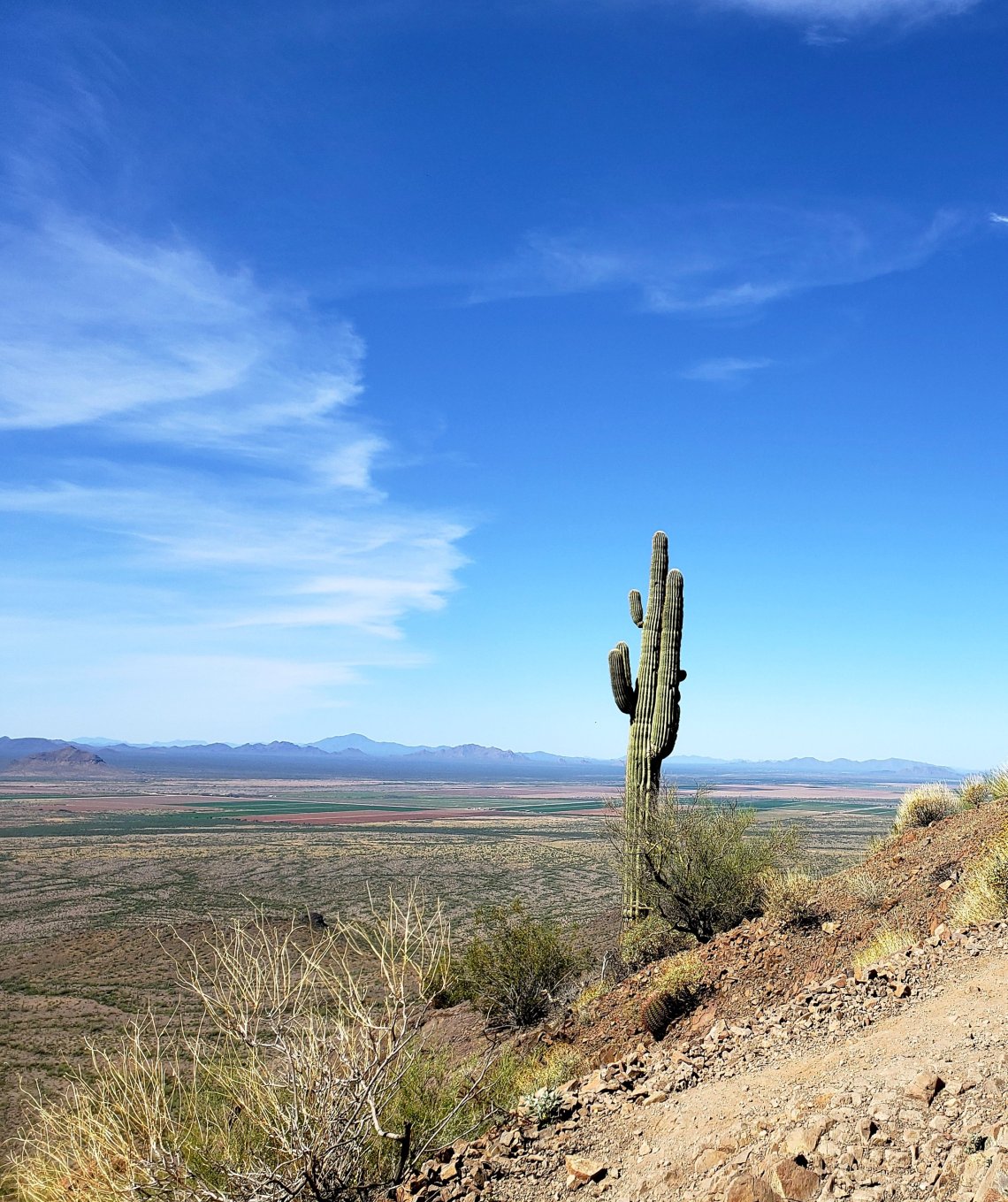 The Saguaro seen below has tiny new stems/arms growing out of it. These cacti arms often resemble arms that look like they are hugging or raising to the skies.
The Saguaro seen below has tiny new stems/arms growing out of it. These cacti arms often resemble arms that look like they are hugging or raising to the skies.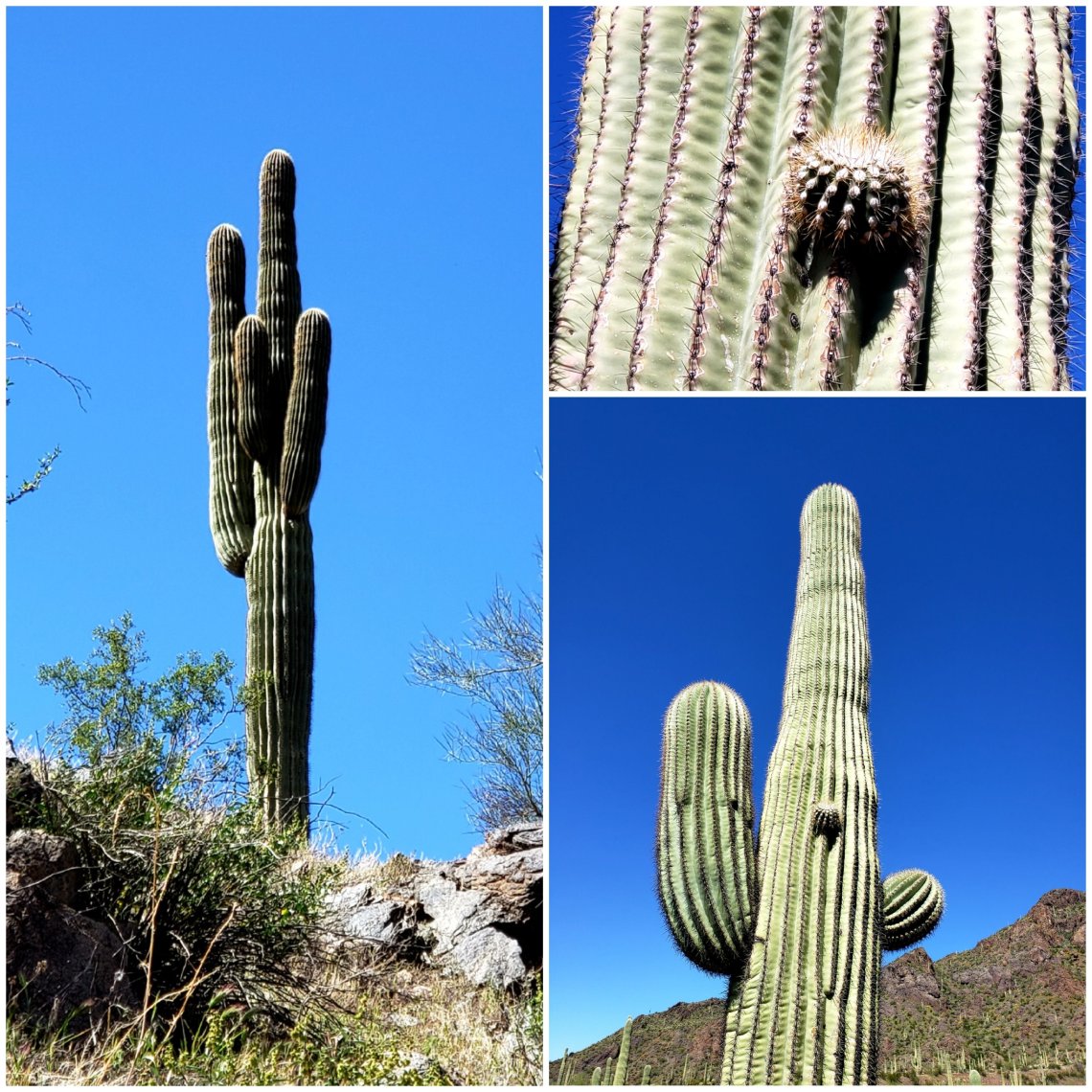 The picture on the left is a healthy Saguaro and the other two on the right are of a Saguaro that has died and all that is left are the ribs of the cactus. These ribs are often used in Native American furniture.
The picture on the left is a healthy Saguaro and the other two on the right are of a Saguaro that has died and all that is left are the ribs of the cactus. These ribs are often used in Native American furniture.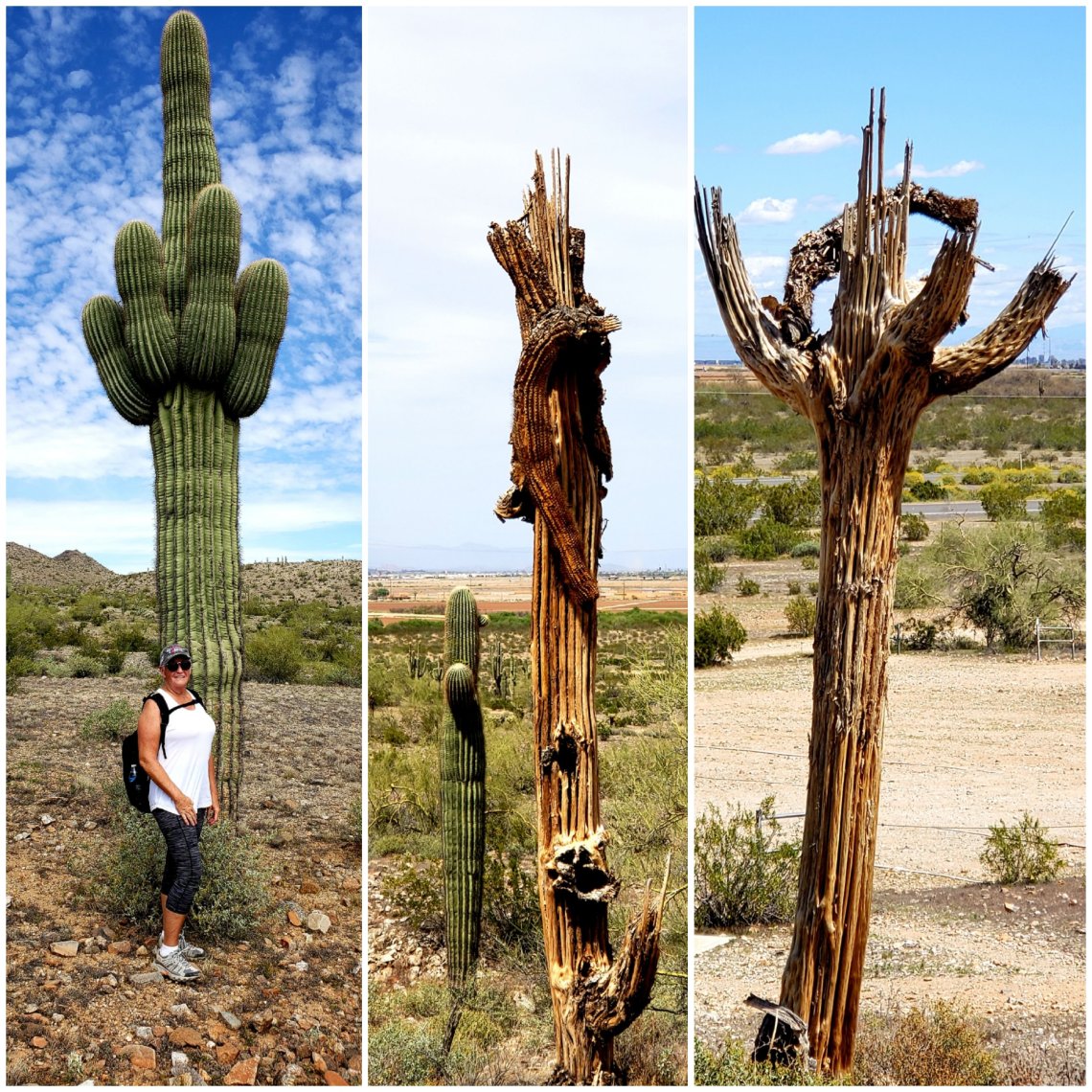 As late April approached the Saguaro formed clusters of blossoms at the top and ends of the arms.
As late April approached the Saguaro formed clusters of blossoms at the top and ends of the arms.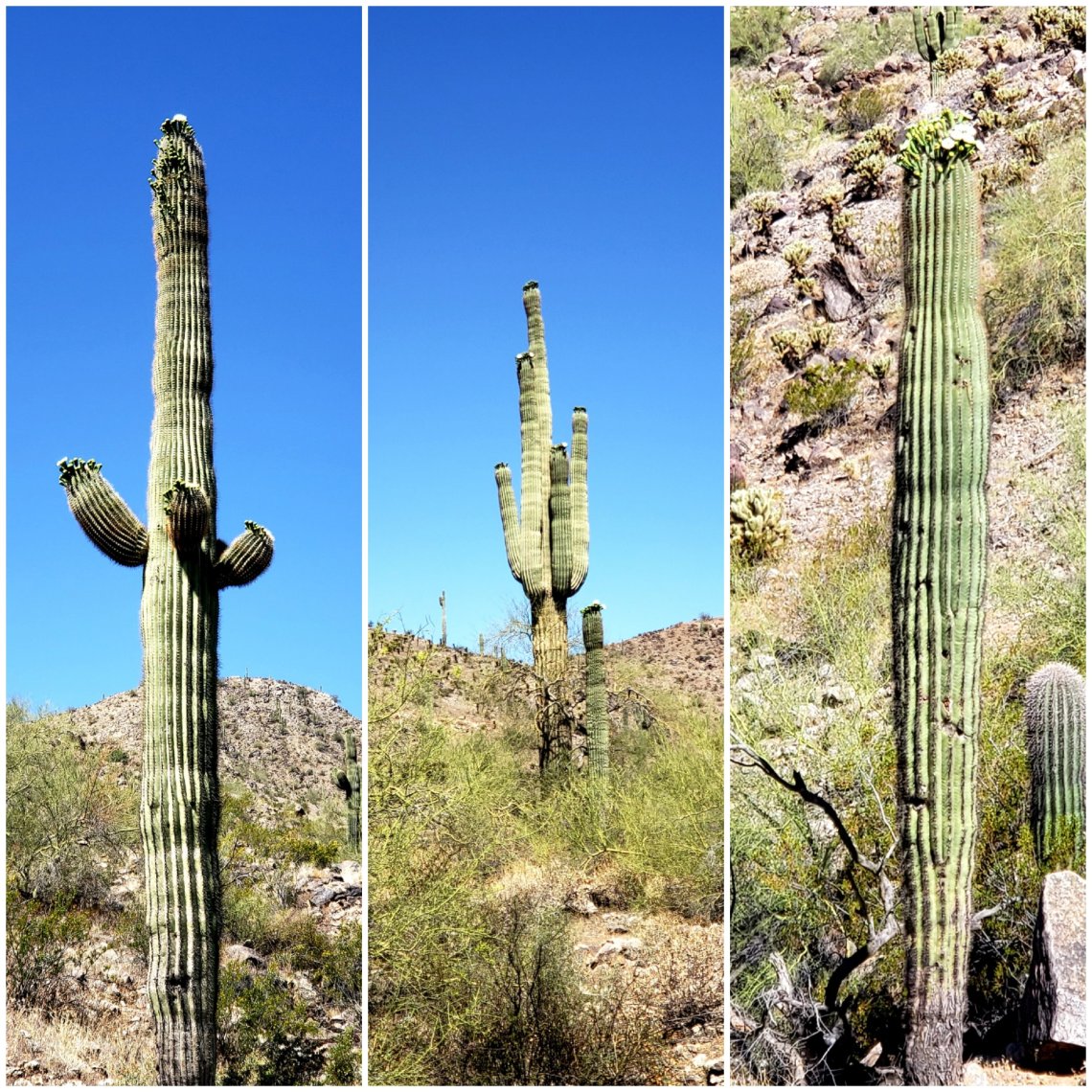 The flower is white and funnel-shaped. The spines are located on the many ribs of the Saguaro’s trunk and are straw-colored and bristle like.
The flower is white and funnel-shaped. The spines are located on the many ribs of the Saguaro’s trunk and are straw-colored and bristle like.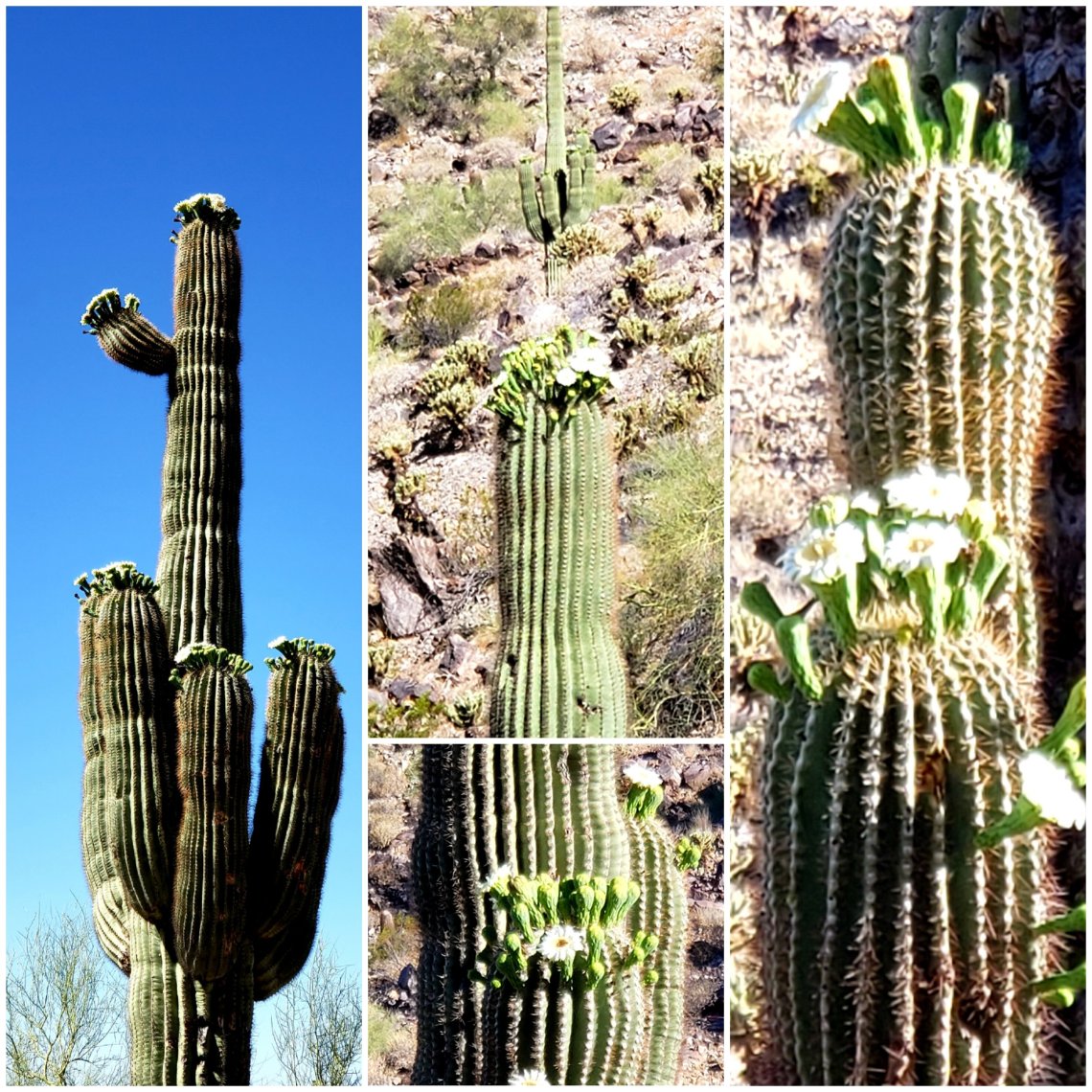 The white flowers grow from the tips of the stems/arms and are 2 to 3 1/2 inches wide with wavy edges and vibrant yellow centers. They normally bloom at dark and stay open until midday.
The white flowers grow from the tips of the stems/arms and are 2 to 3 1/2 inches wide with wavy edges and vibrant yellow centers. They normally bloom at dark and stay open until midday.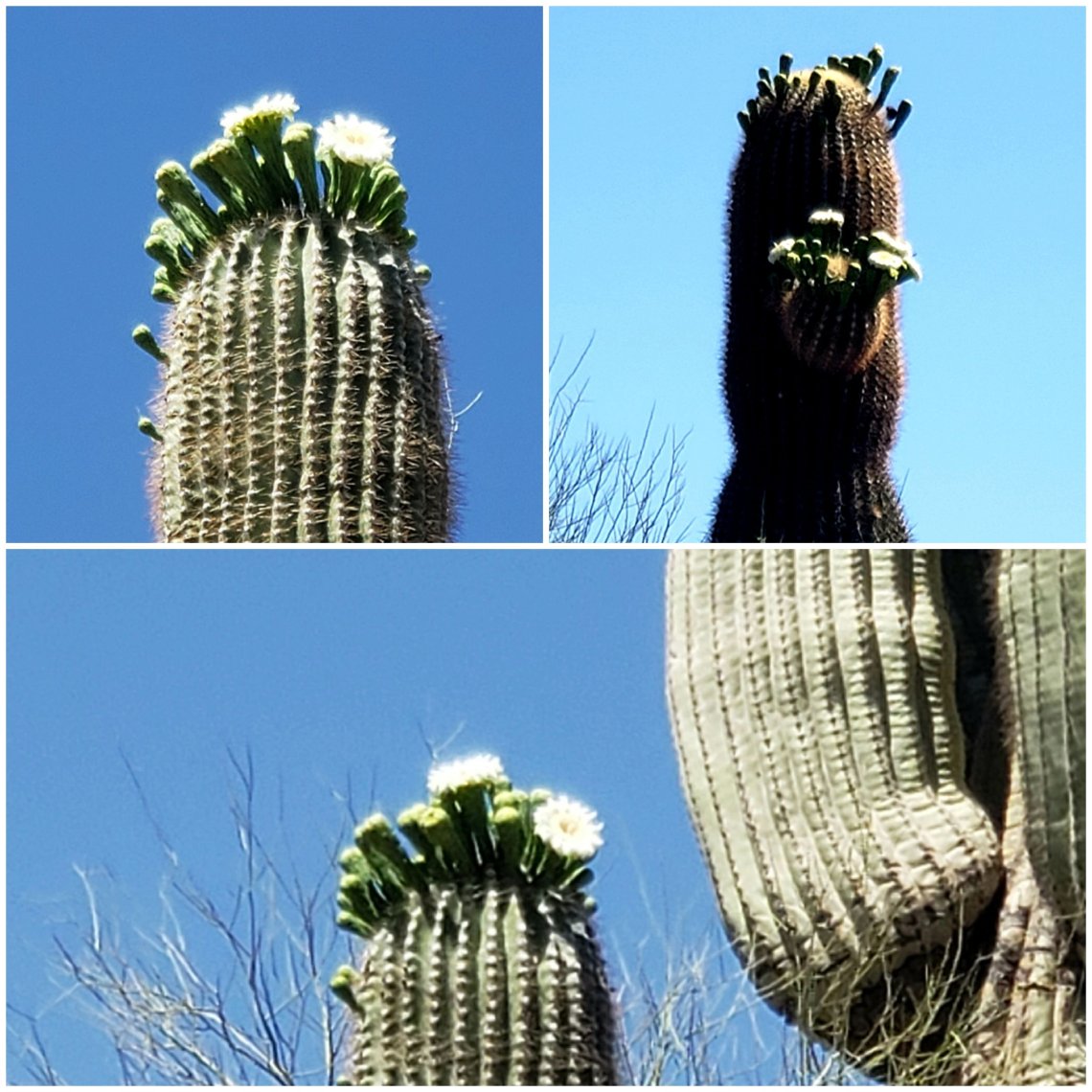 After the Saguaro blooms it will give way to a greenish-pink fruit that ripens to a bright red color in early summer. This fruit is often used by the Native American Indians to make a tasty syrup or wine.
After the Saguaro blooms it will give way to a greenish-pink fruit that ripens to a bright red color in early summer. This fruit is often used by the Native American Indians to make a tasty syrup or wine.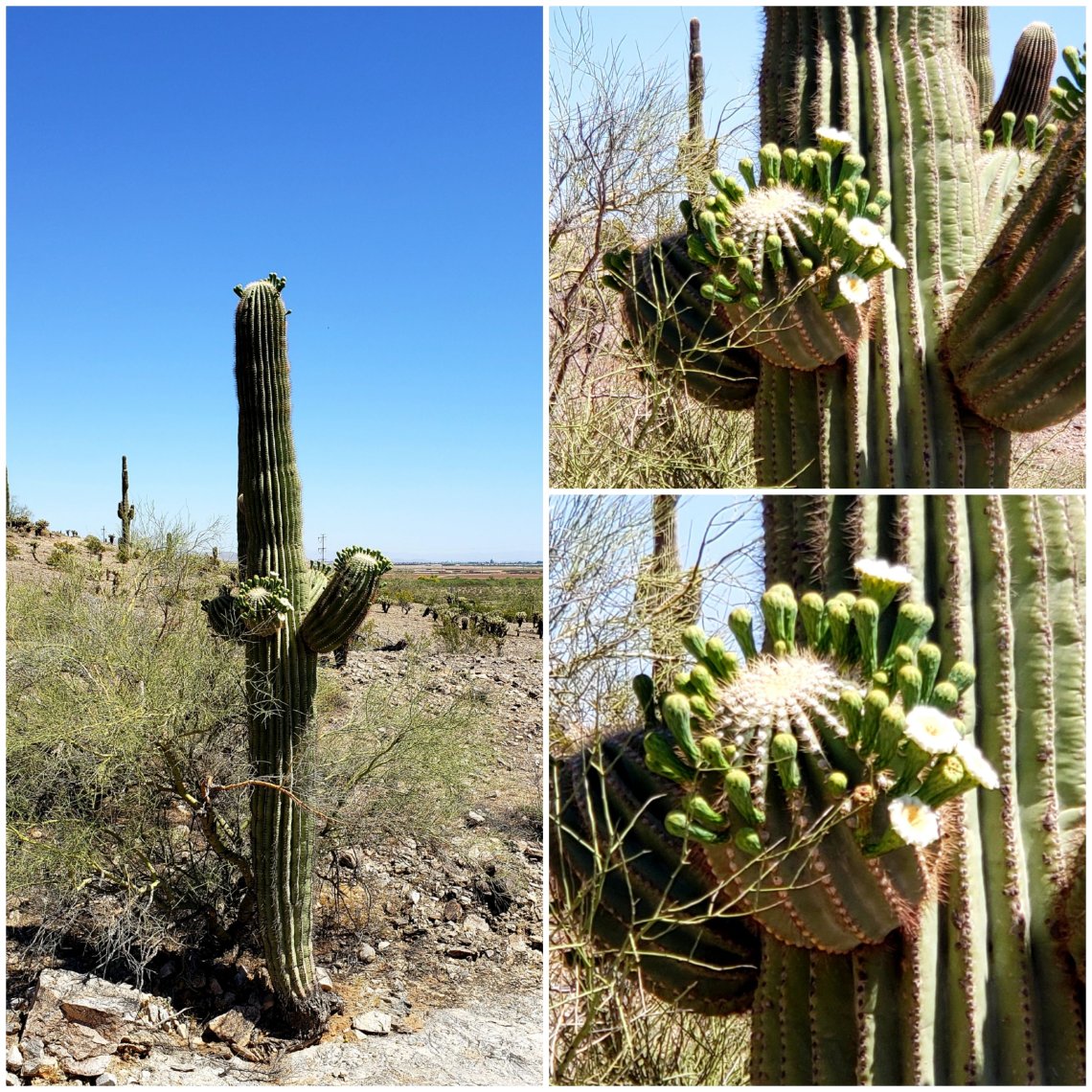 Saguaro’s are also home to birds and other small animals.
Saguaro’s are also home to birds and other small animals. **** The Senita (sen-EE-tah)The Senita is usually found in upright clusters. Each stem is between 4 and 8 inches thick and can be as tall as 50 feet.
**** The Senita (sen-EE-tah)The Senita is usually found in upright clusters. Each stem is between 4 and 8 inches thick and can be as tall as 50 feet.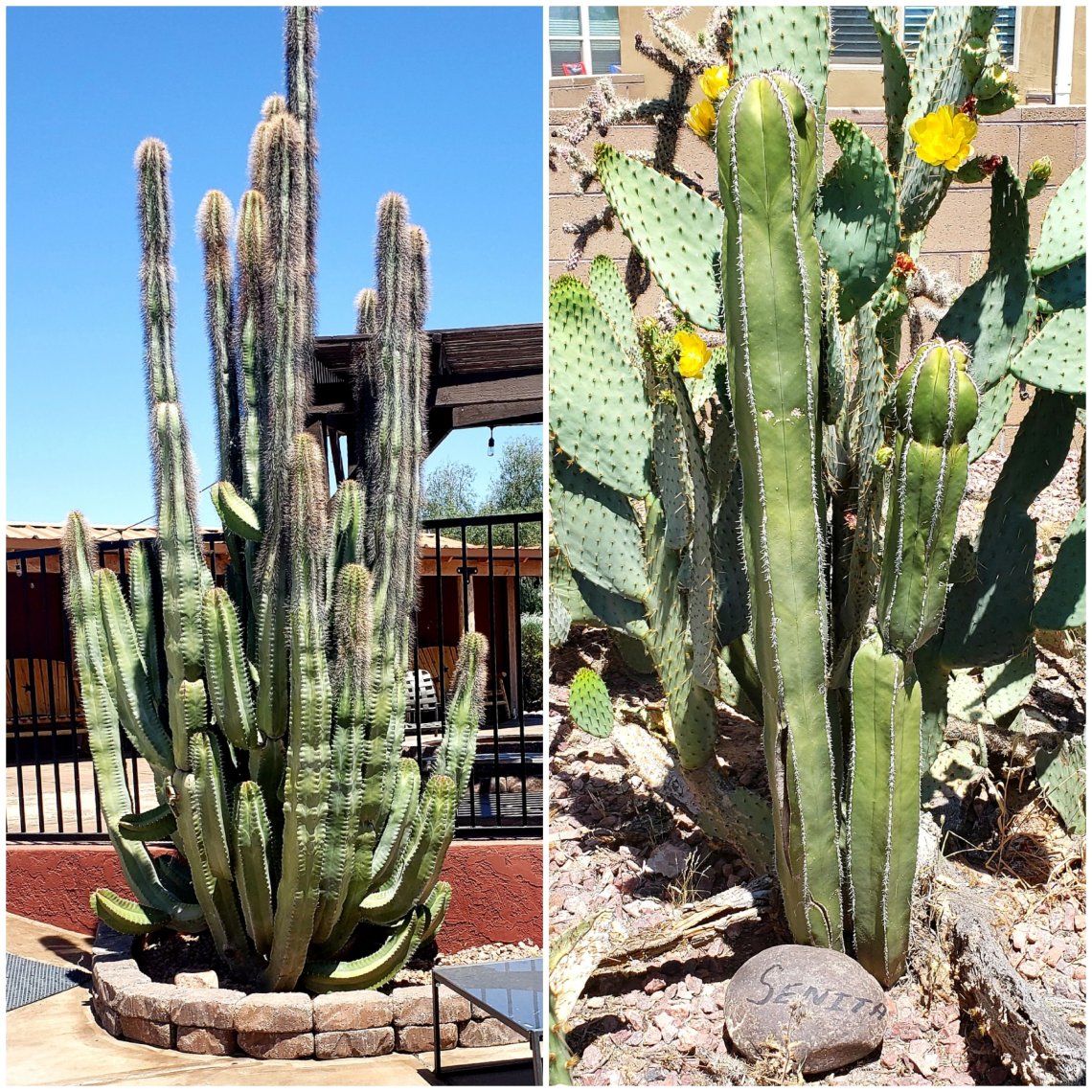 There are 5 to 6 ribs on the Senita and the spines are 1 to 4 inches long.
There are 5 to 6 ribs on the Senita and the spines are 1 to 4 inches long. The flower of the Senita blooms at night and they are very small pinkish flowers. I got up at dawn to find these.These particular Senita’s are at the Desert Springs Ranch where I stayed.
The flower of the Senita blooms at night and they are very small pinkish flowers. I got up at dawn to find these.These particular Senita’s are at the Desert Springs Ranch where I stayed.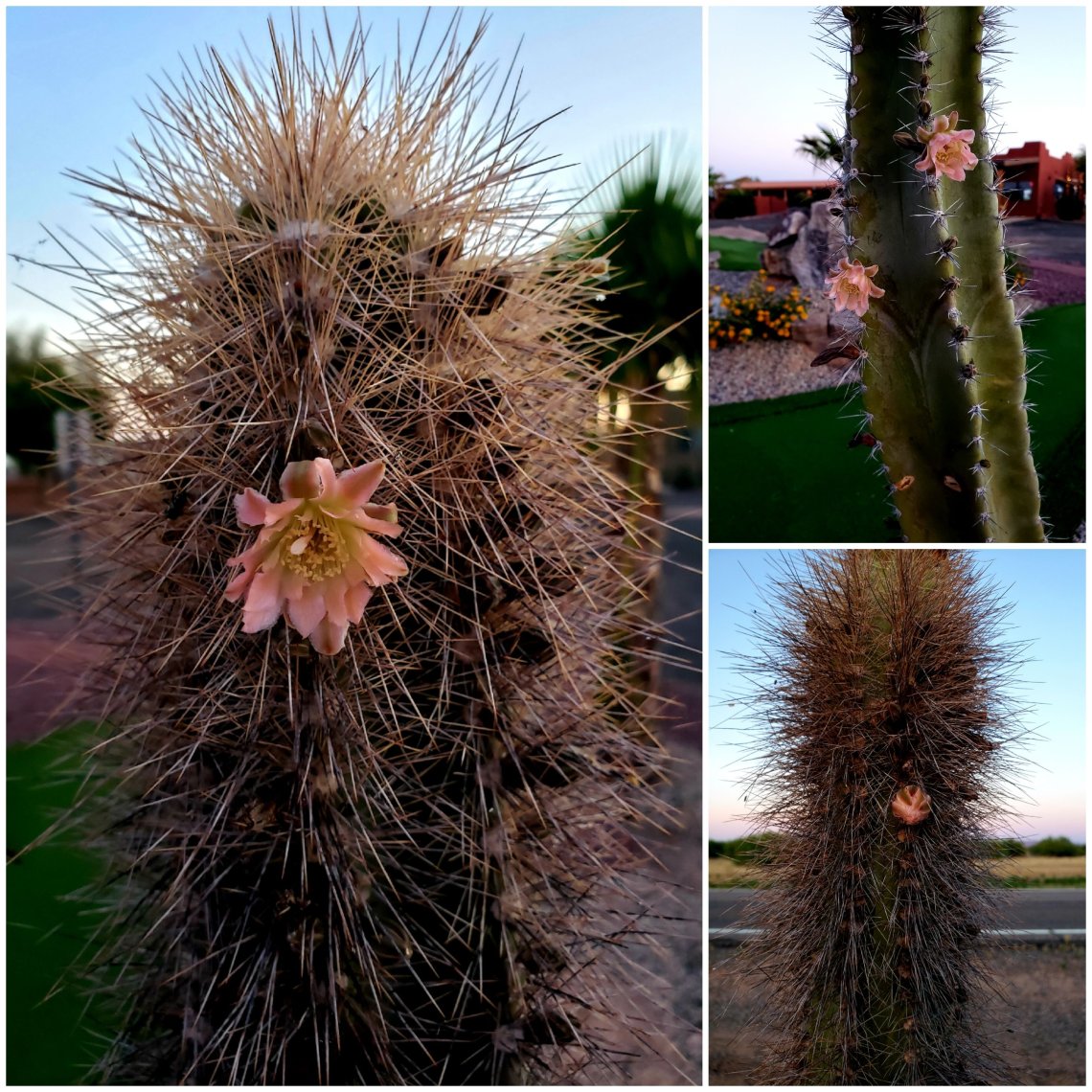 **** The Ocotillo (aa-kuh-ti-low)Ocotillo’s can grow to a height of 20 feet. Their stems are wood like and the spines are actually leaves that eventually drop off and form sharp pointy spines.
**** The Ocotillo (aa-kuh-ti-low)Ocotillo’s can grow to a height of 20 feet. Their stems are wood like and the spines are actually leaves that eventually drop off and form sharp pointy spines.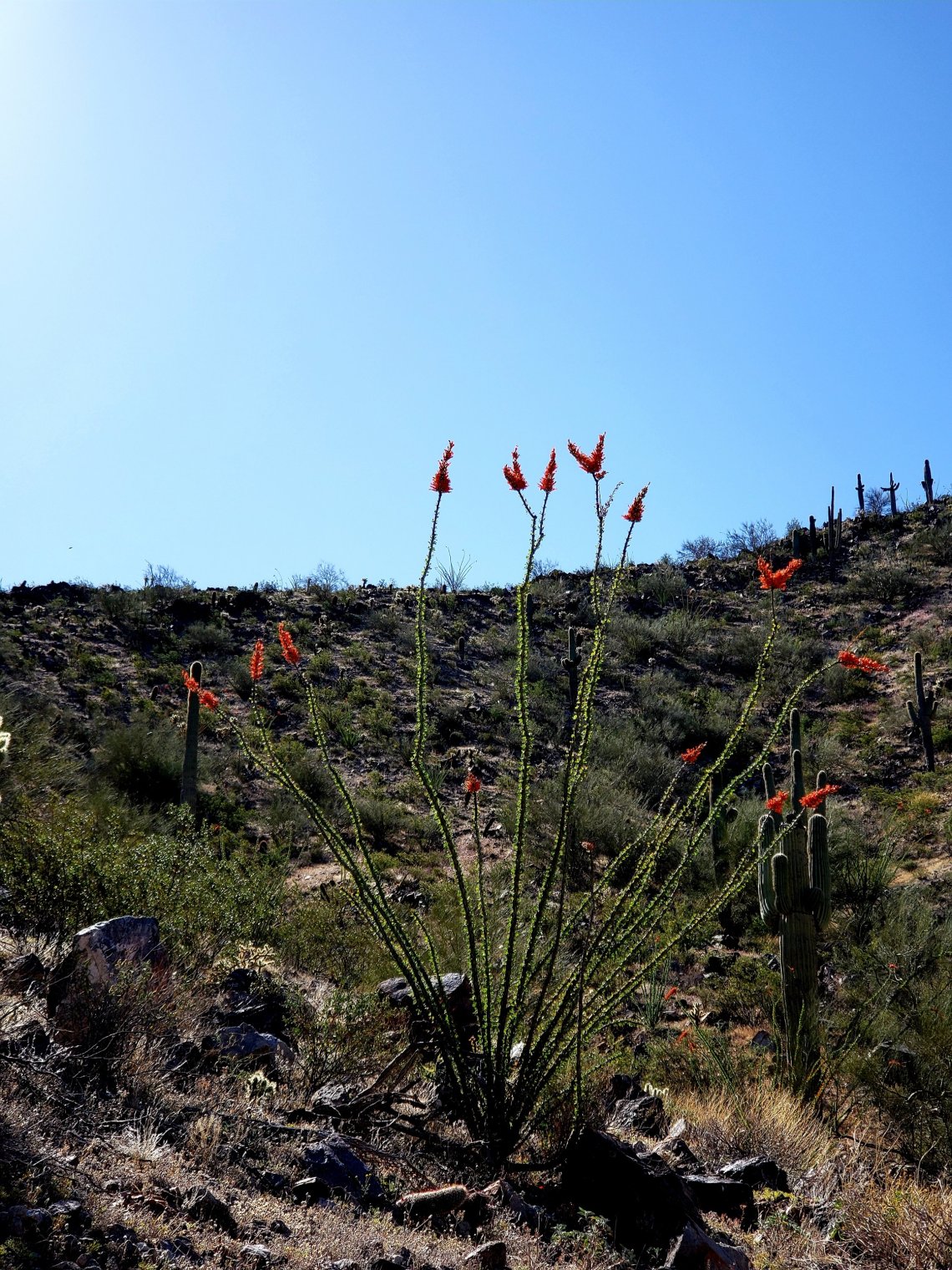 The flower of the Ocotillo was one of the first to bloom here. It is a flame-shaped orange-red cluster of flowers that blossomed at the end of each long stem.
The flower of the Ocotillo was one of the first to bloom here. It is a flame-shaped orange-red cluster of flowers that blossomed at the end of each long stem.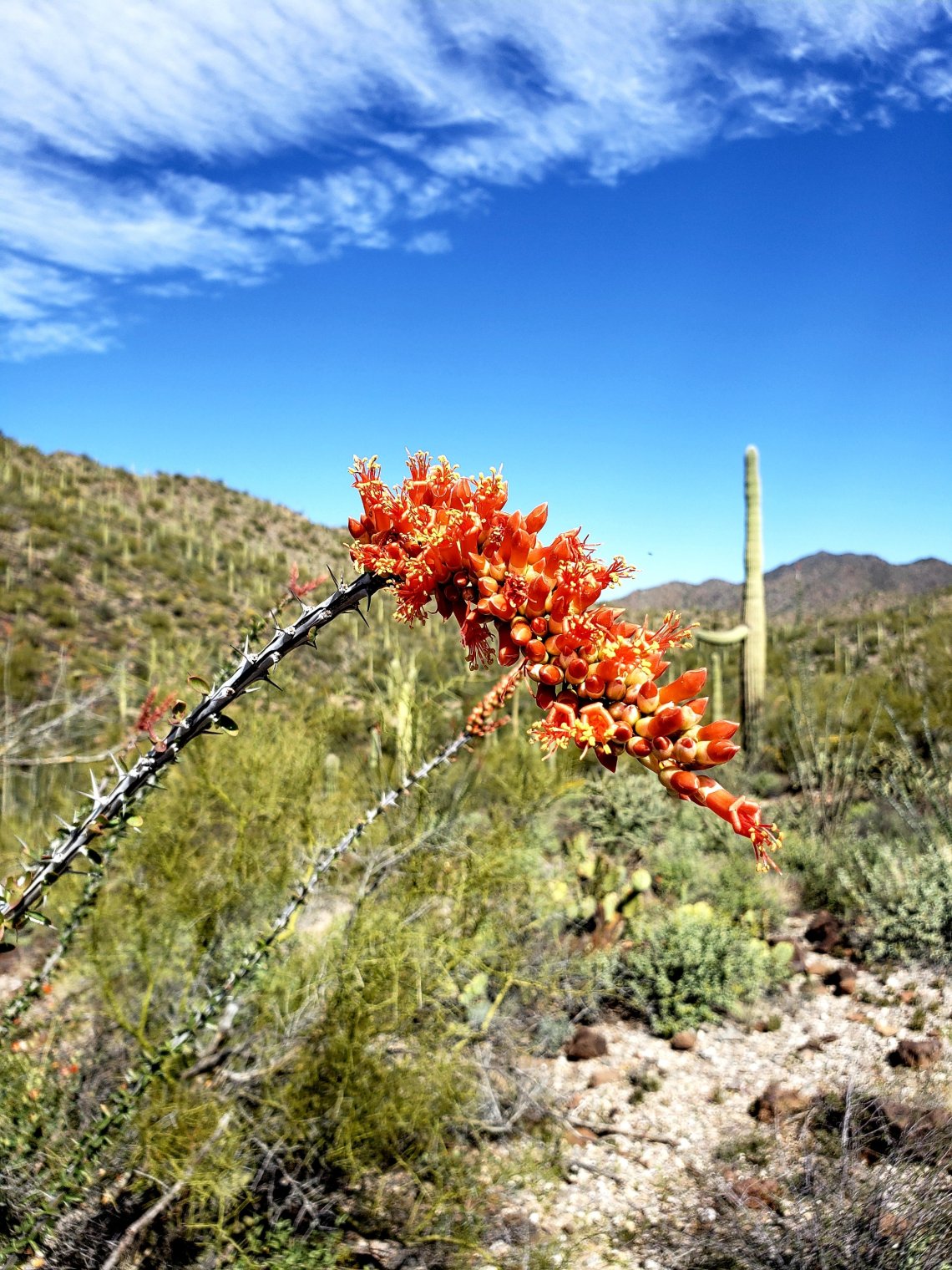 The cactus can either be full of green leaves or dead looking and still produce flowers.The Ocotillo is one of my favorites and can be found just about anywhere in Arizona.
The cactus can either be full of green leaves or dead looking and still produce flowers.The Ocotillo is one of my favorites and can be found just about anywhere in Arizona. **** The Organ Pipe CactusIn March, my friend Becky (from Texas) and I were able to visit the Organ Pipe Cactus National Monument south of the town of Ajo, Arizona near the Mexico border.
**** The Organ Pipe CactusIn March, my friend Becky (from Texas) and I were able to visit the Organ Pipe Cactus National Monument south of the town of Ajo, Arizona near the Mexico border. There are some hiking and driving trails through the park with some amazing views. Much like the hole in the rock that forms an arch.
There are some hiking and driving trails through the park with some amazing views. Much like the hole in the rock that forms an arch.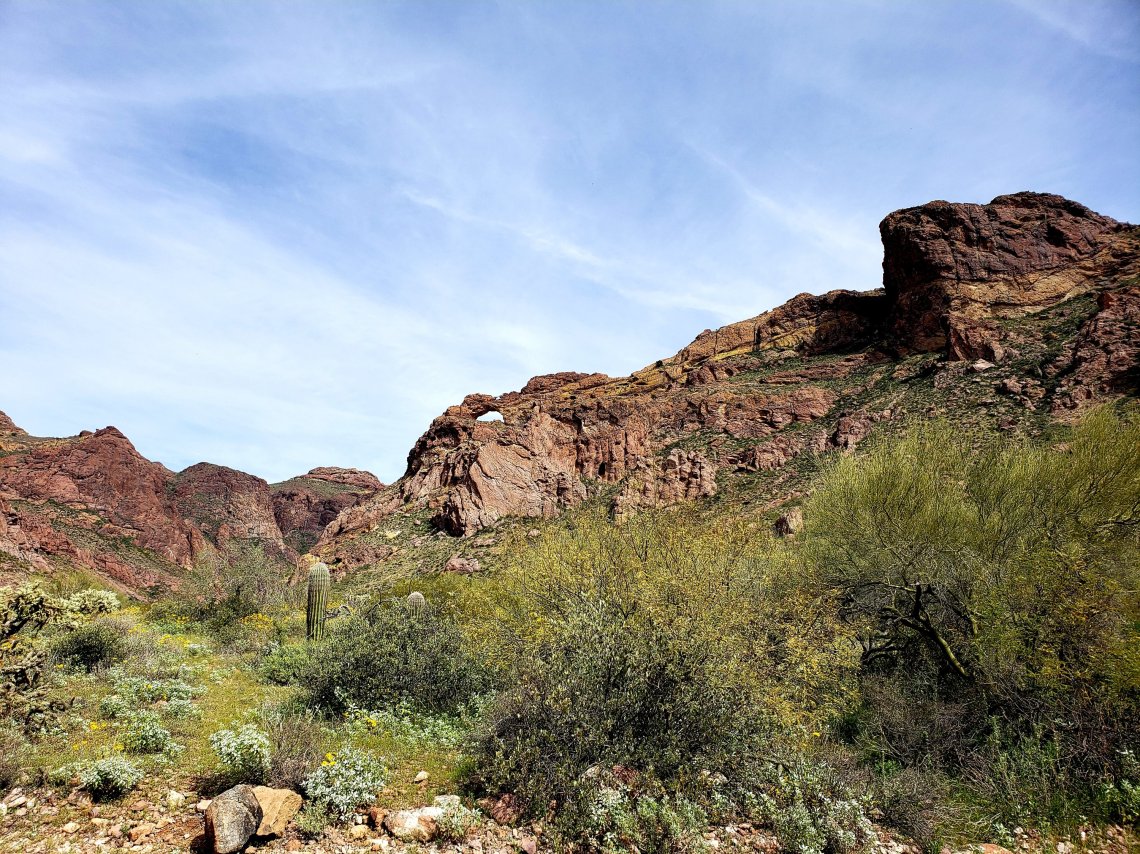 Like the Senita, the Organ Pipe Cactus can usually be found in clusters and form stems of 9 to 40 feet high. They have between 15 and 19 ribs that give way to a 1/2 to 2 1/2 inch spine.
Like the Senita, the Organ Pipe Cactus can usually be found in clusters and form stems of 9 to 40 feet high. They have between 15 and 19 ribs that give way to a 1/2 to 2 1/2 inch spine.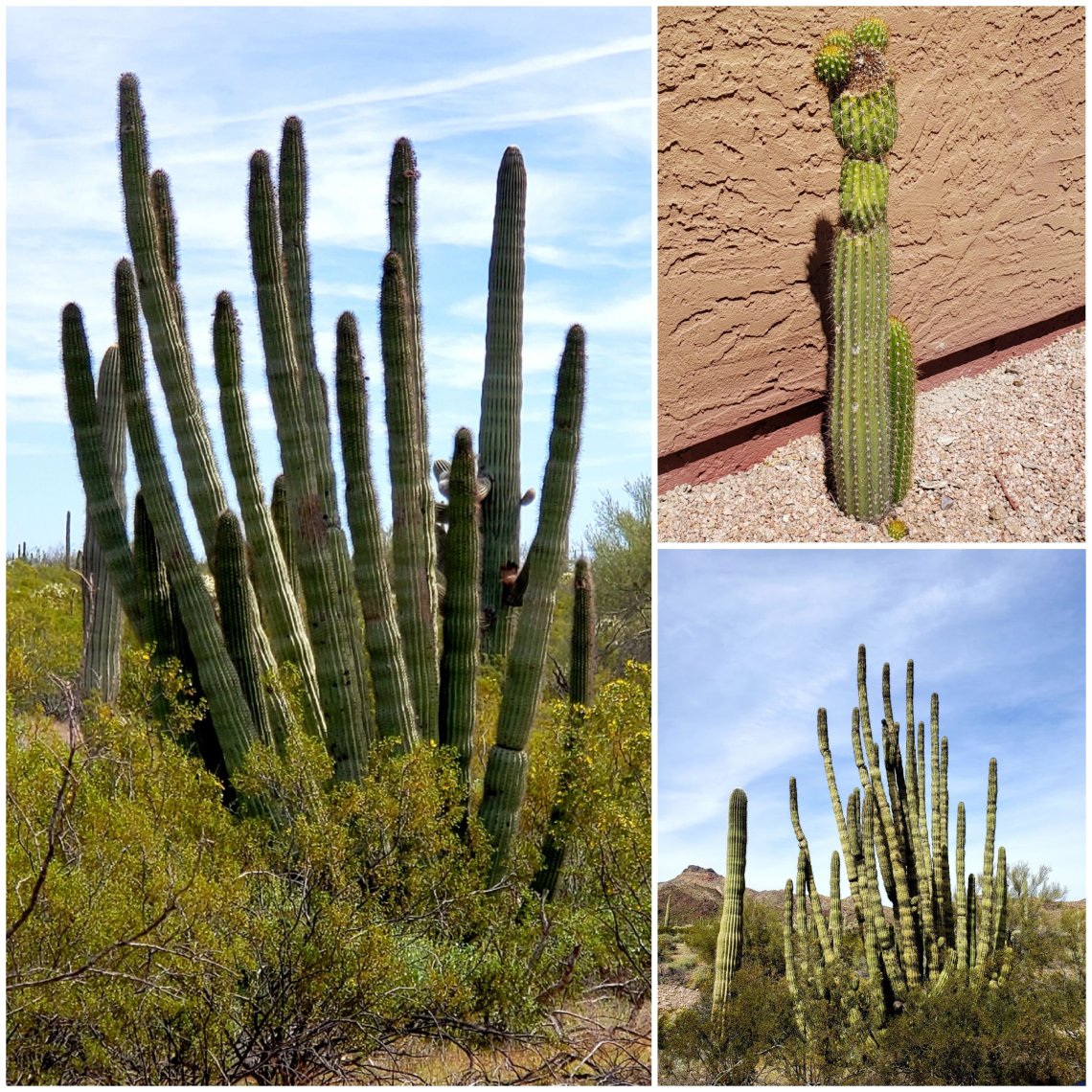 The flower of the Organ Pipe is a white and pink stripped funnel-shaped blossom. I was lucky enough to find some that had blossomed right here in Casa Grande.
The flower of the Organ Pipe is a white and pink stripped funnel-shaped blossom. I was lucky enough to find some that had blossomed right here in Casa Grande. **** Prickly PearThere are many different types of Prickly Pear cactus. The one below is at the Ranch and is the Engelmann Prickly Pear. It is a taproot cactus of multiple clusters that can range from 6 to 15 feet in height.
**** Prickly PearThere are many different types of Prickly Pear cactus. The one below is at the Ranch and is the Engelmann Prickly Pear. It is a taproot cactus of multiple clusters that can range from 6 to 15 feet in height.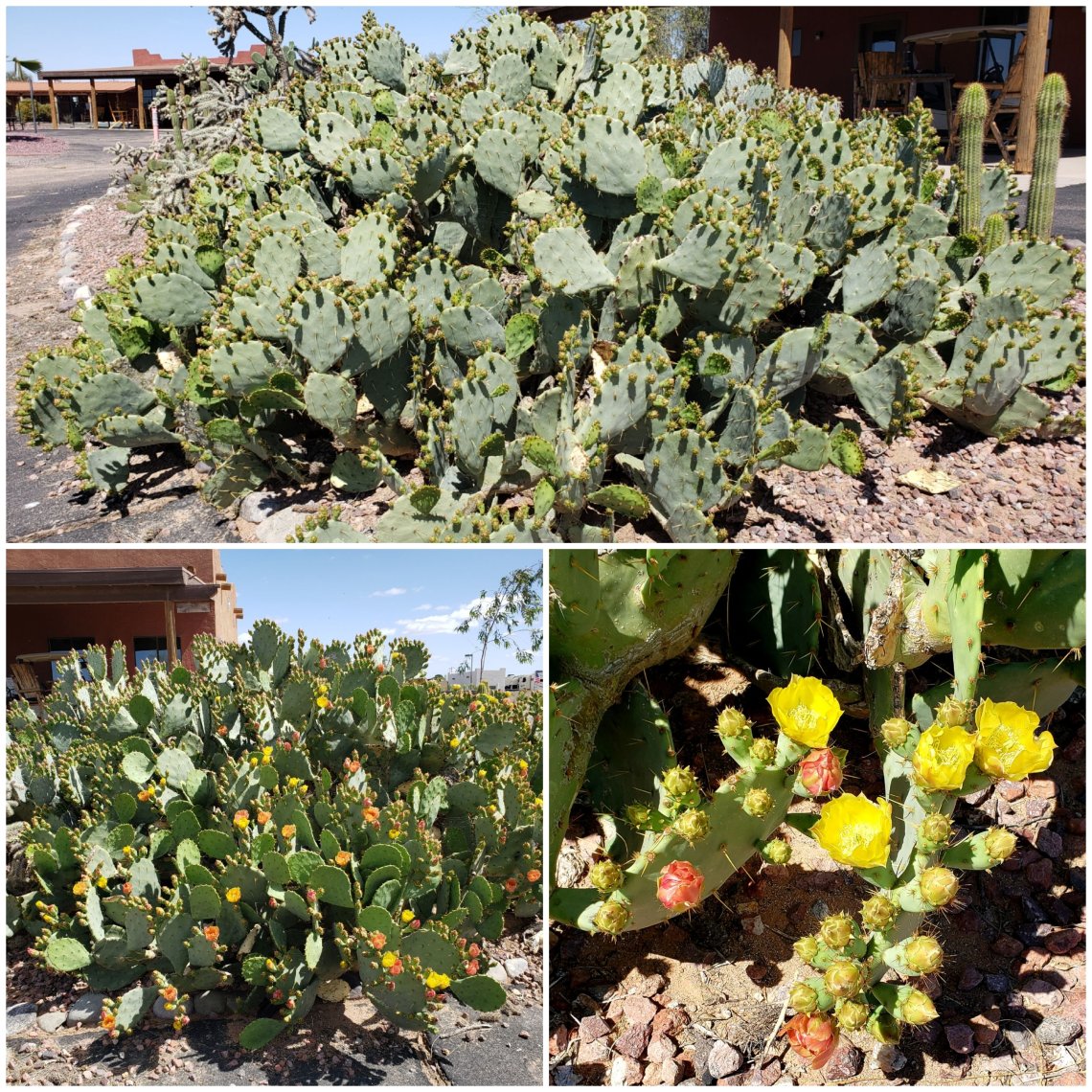 The 1 inch spines cover the pads that range from 4 to 16 inch wide.The vibrant yellow flowers turn an apricot color as they age and as you can see they are a beautiful sight.
The 1 inch spines cover the pads that range from 4 to 16 inch wide.The vibrant yellow flowers turn an apricot color as they age and as you can see they are a beautiful sight.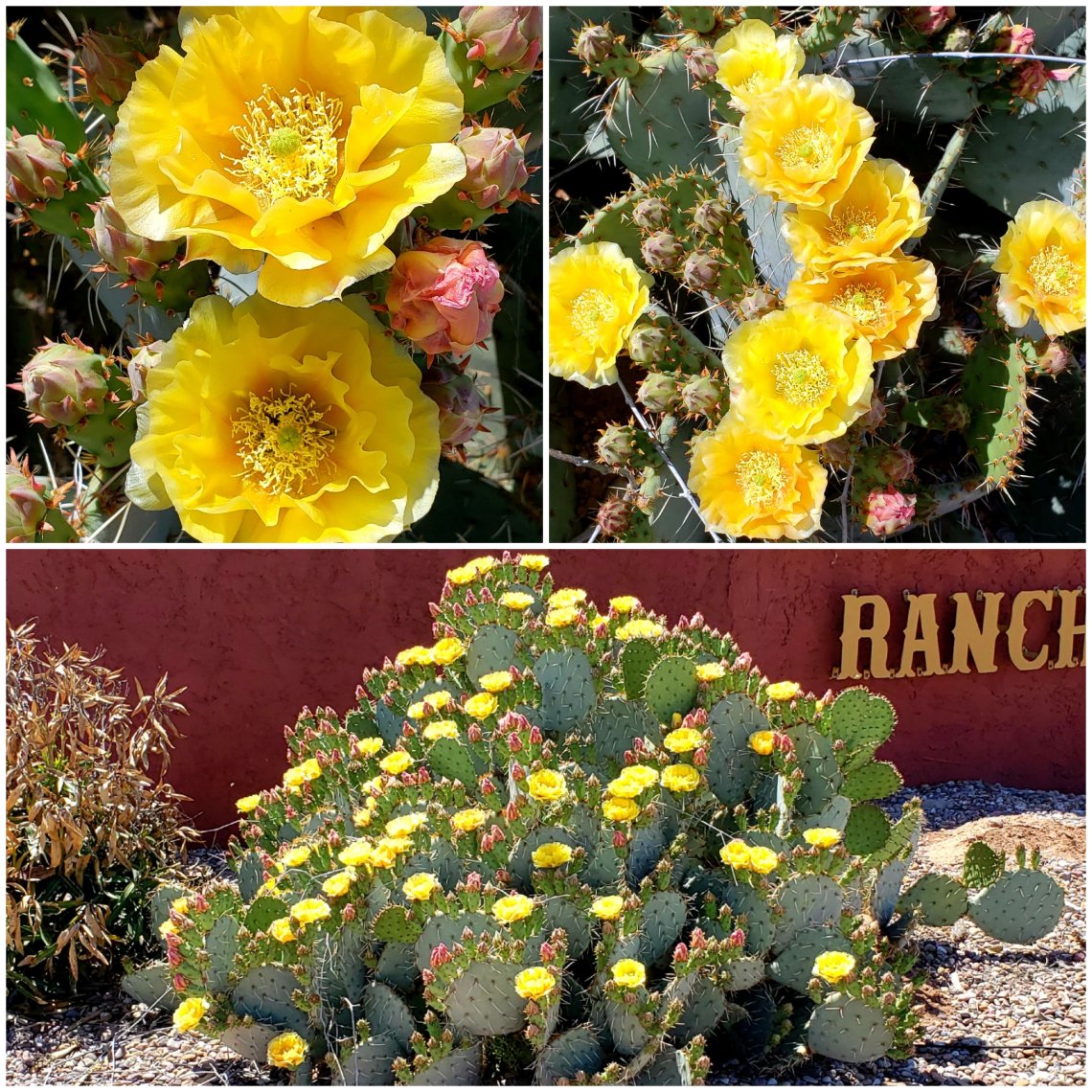 The Prickly Pear also bears a fruit. The fruit which starts off as a green barrel-shaped pod turns to a dark red when ripe. The Prickly Pear fruit is also called the Cactus Apple and is often used in juice and jams.
The Prickly Pear also bears a fruit. The fruit which starts off as a green barrel-shaped pod turns to a dark red when ripe. The Prickly Pear fruit is also called the Cactus Apple and is often used in juice and jams.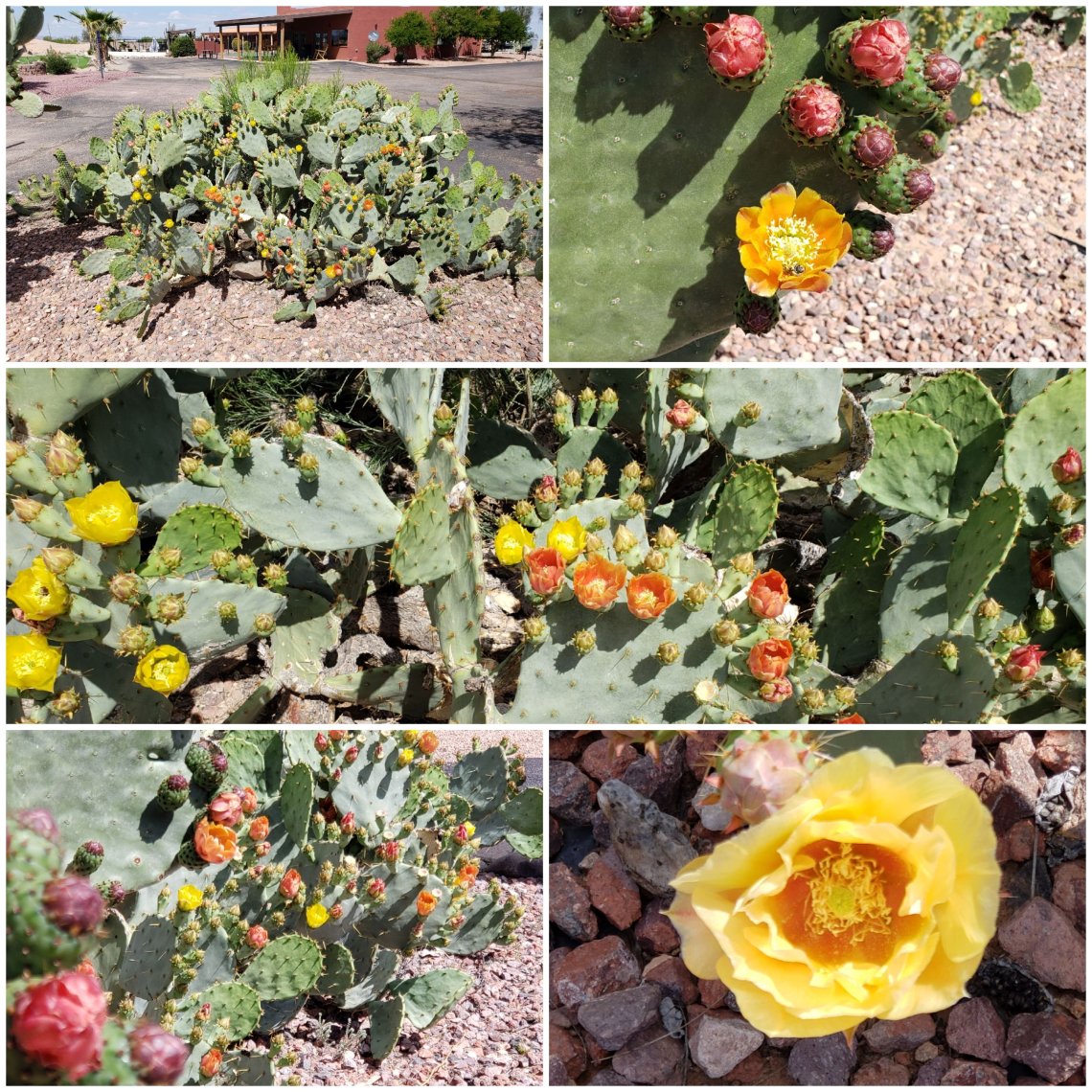 This is the Beavertail Prickly Pear which has a very vibrant Pink flower that grows from the end of its supposedly spineless pads. Don’t be fooled because they will still stick you!
This is the Beavertail Prickly Pear which has a very vibrant Pink flower that grows from the end of its supposedly spineless pads. Don’t be fooled because they will still stick you! This is the Pancake Prickly Pear. It too is supposedly spineless and it bears a light colored yellow flower.
This is the Pancake Prickly Pear. It too is supposedly spineless and it bears a light colored yellow flower.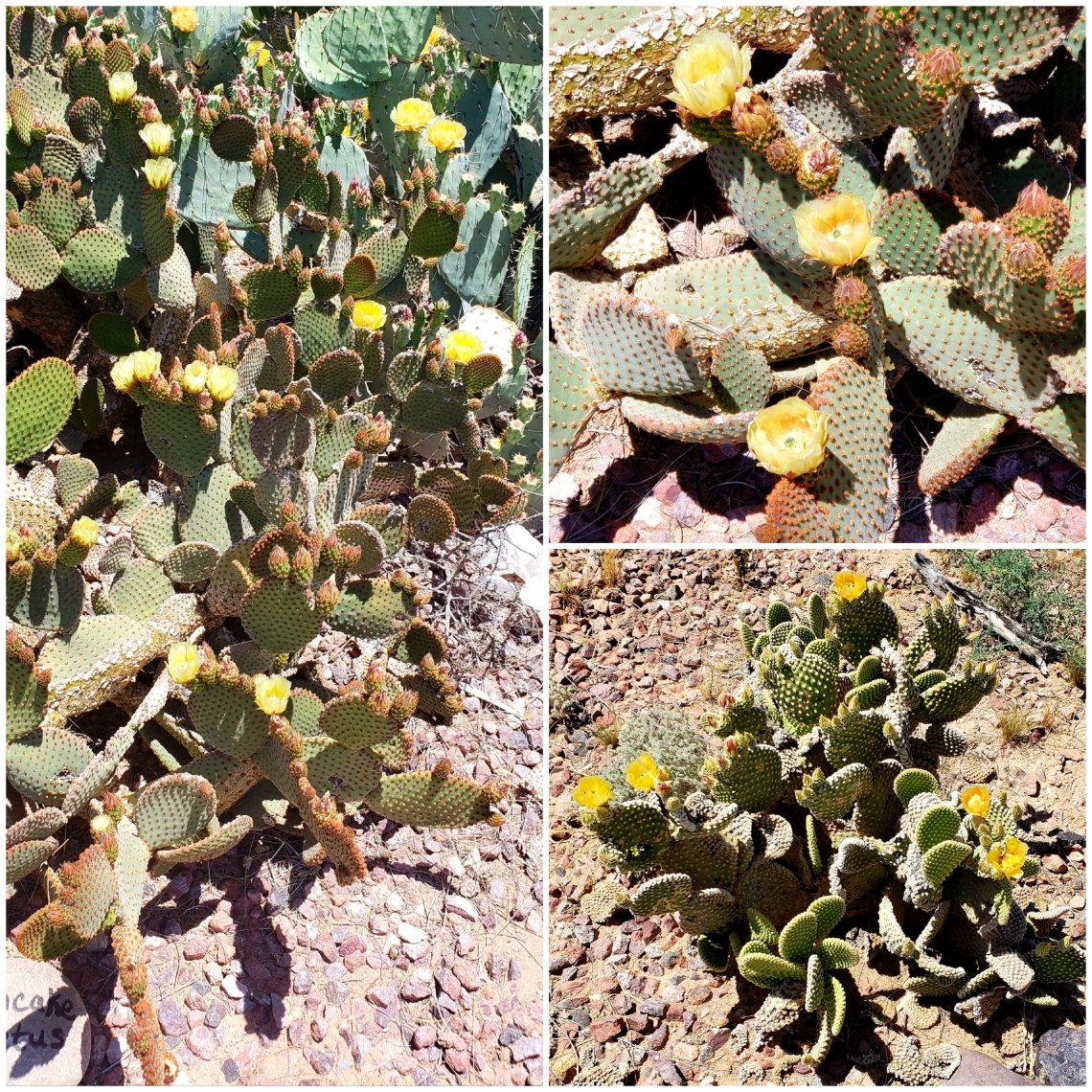 The first time I saw a purple cactus I thought, this must be what one looks like when it gets old. I was wrong and the purple cactus is actually called a Santa Rita Prickly Pear.Giving way to beautiful yellow flowers, it is also considered spineless
The first time I saw a purple cactus I thought, this must be what one looks like when it gets old. I was wrong and the purple cactus is actually called a Santa Rita Prickly Pear.Giving way to beautiful yellow flowers, it is also considered spineless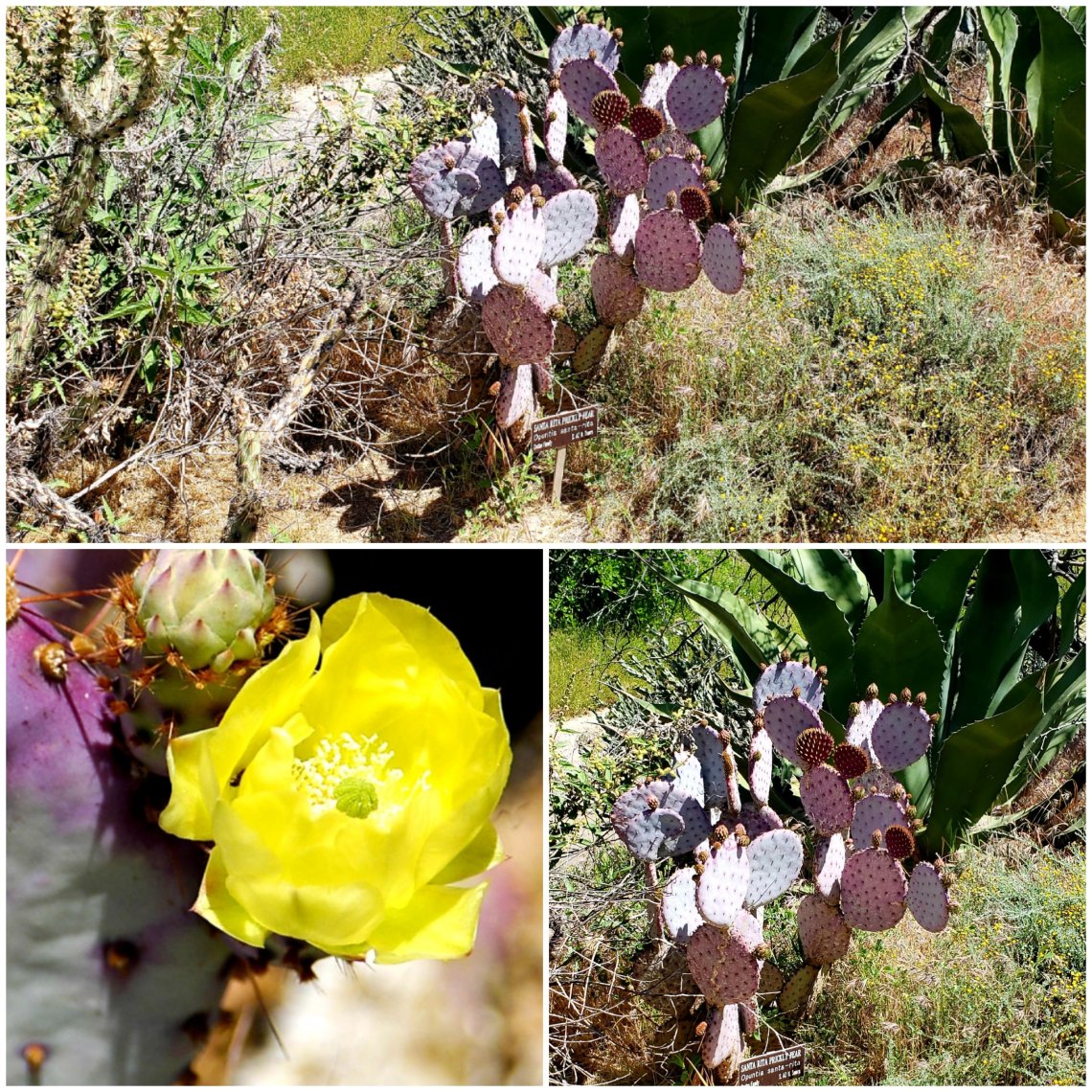 **** The Barbary FigThis cactus resembles a tree that can grow up to 20 feet high. It is smooth and glossy, with wide spineless pads.The flowers are a yellowish orange color and it also bears a pinkish pod like fruit.
**** The Barbary FigThis cactus resembles a tree that can grow up to 20 feet high. It is smooth and glossy, with wide spineless pads.The flowers are a yellowish orange color and it also bears a pinkish pod like fruit.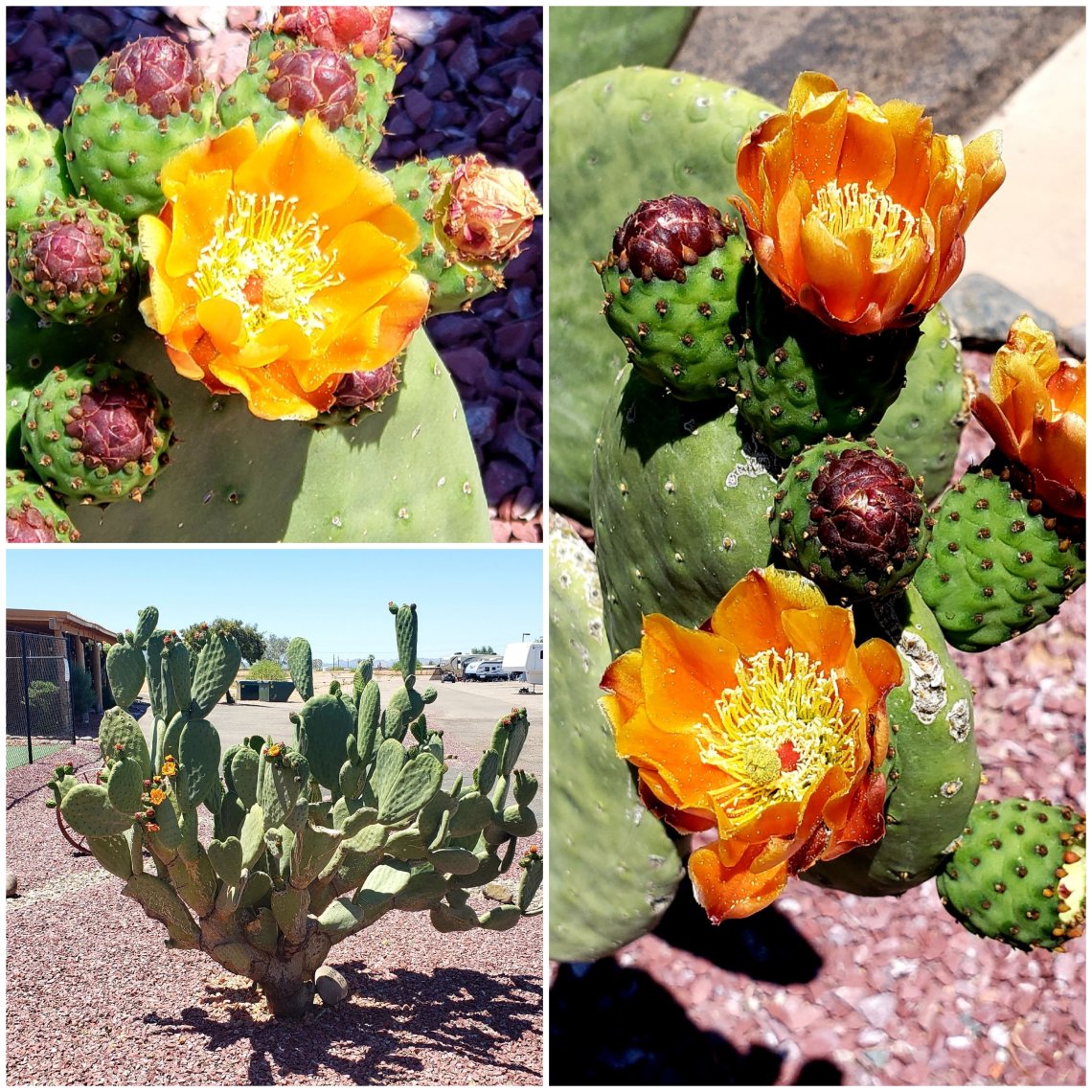 Each day I would walk the grounds of the Ranch to check on the progress of many of the cactus and plants here. Many of my pictures are of cactus here at Desert Spring Ranch and a lot of them are from my hiking adventures.
Each day I would walk the grounds of the Ranch to check on the progress of many of the cactus and plants here. Many of my pictures are of cactus here at Desert Spring Ranch and a lot of them are from my hiking adventures.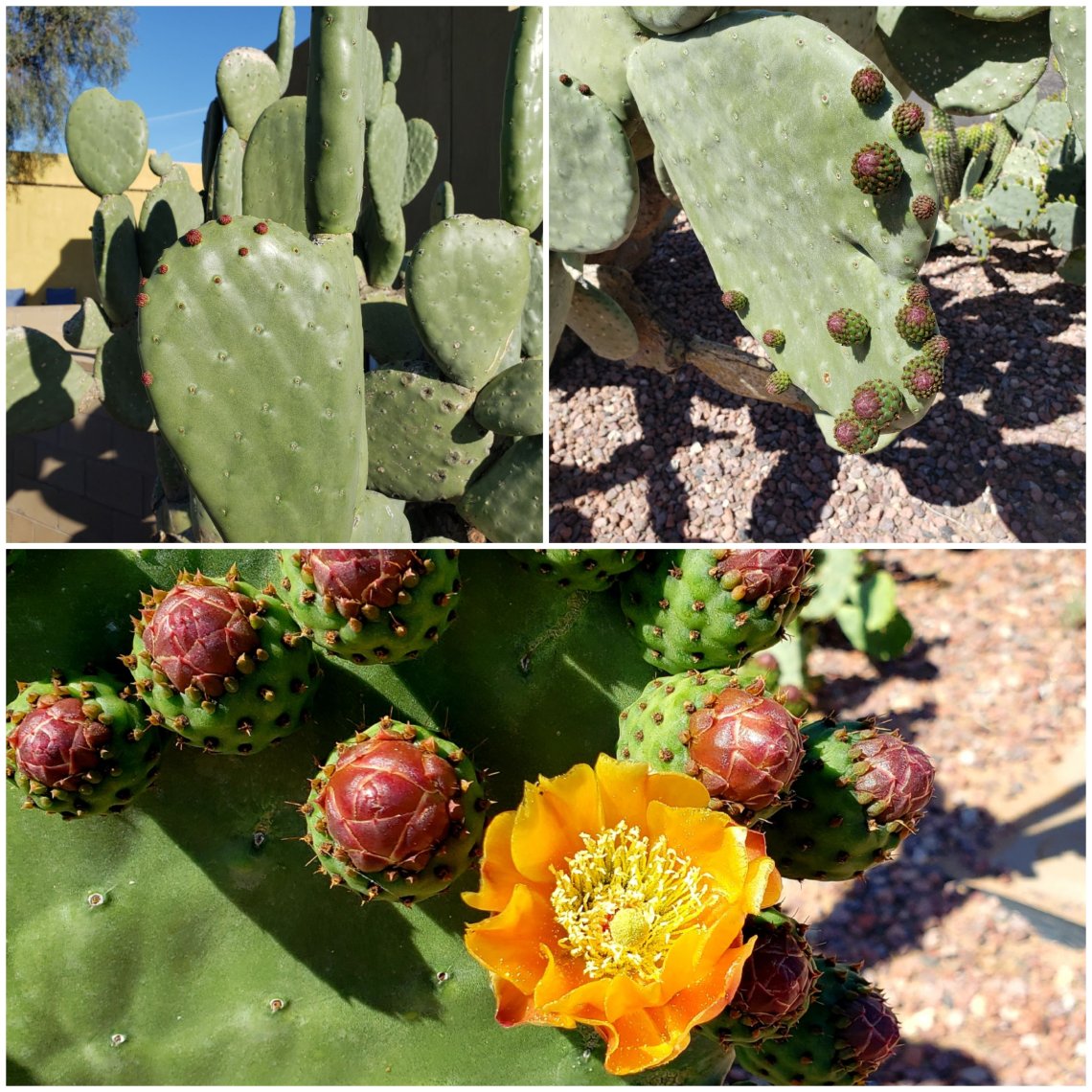 **** Cow’s TongueThis interesting cactus has pads that resemble a cow’s tongue.It spreads out and grows upwards to 10 feet.
**** Cow’s TongueThis interesting cactus has pads that resemble a cow’s tongue.It spreads out and grows upwards to 10 feet.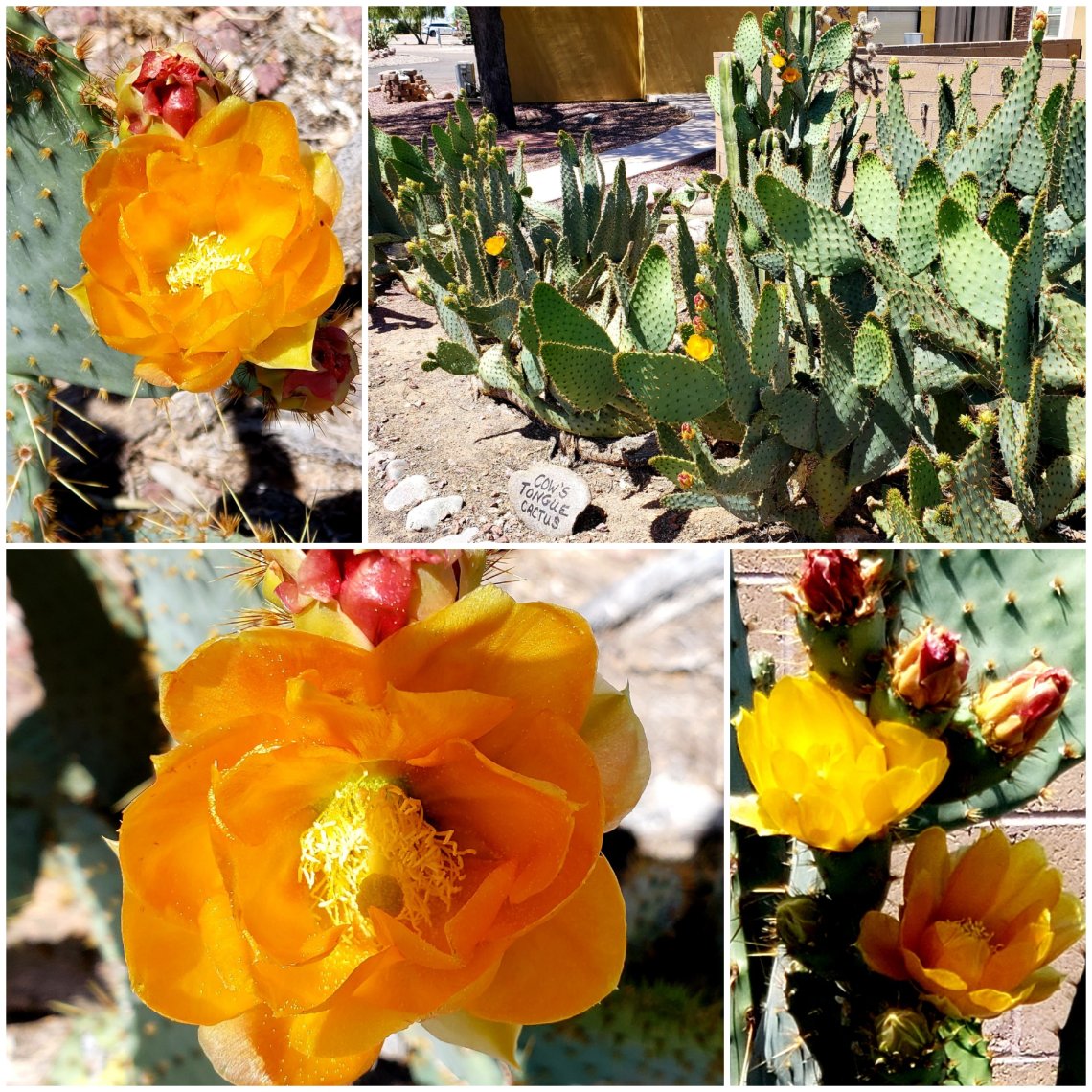 The cow’s tongue cactus is native to the state of Texas and produces yellow and orange flowers.Both the pads and the fruit it produces have been eaten by Native Americans for centuries.
The cow’s tongue cactus is native to the state of Texas and produces yellow and orange flowers.Both the pads and the fruit it produces have been eaten by Native Americans for centuries.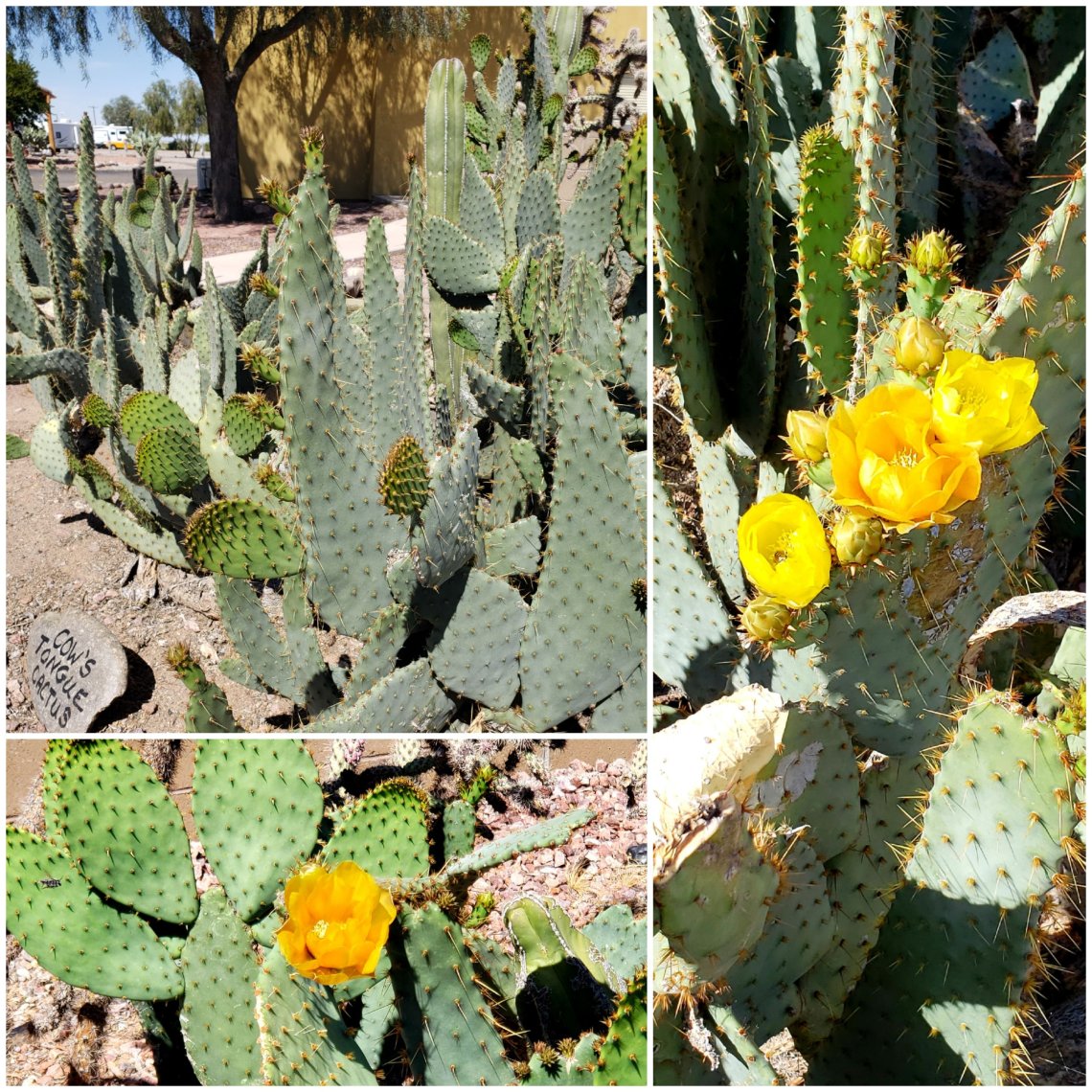 **** Old Man CactusThe “Old Man” is a good name for these cactus. Also found here at the Ranch, they are very hairy, with an unkempt look of an old man and can grow up to 15 feet in height.
**** Old Man CactusThe “Old Man” is a good name for these cactus. Also found here at the Ranch, they are very hairy, with an unkempt look of an old man and can grow up to 15 feet in height.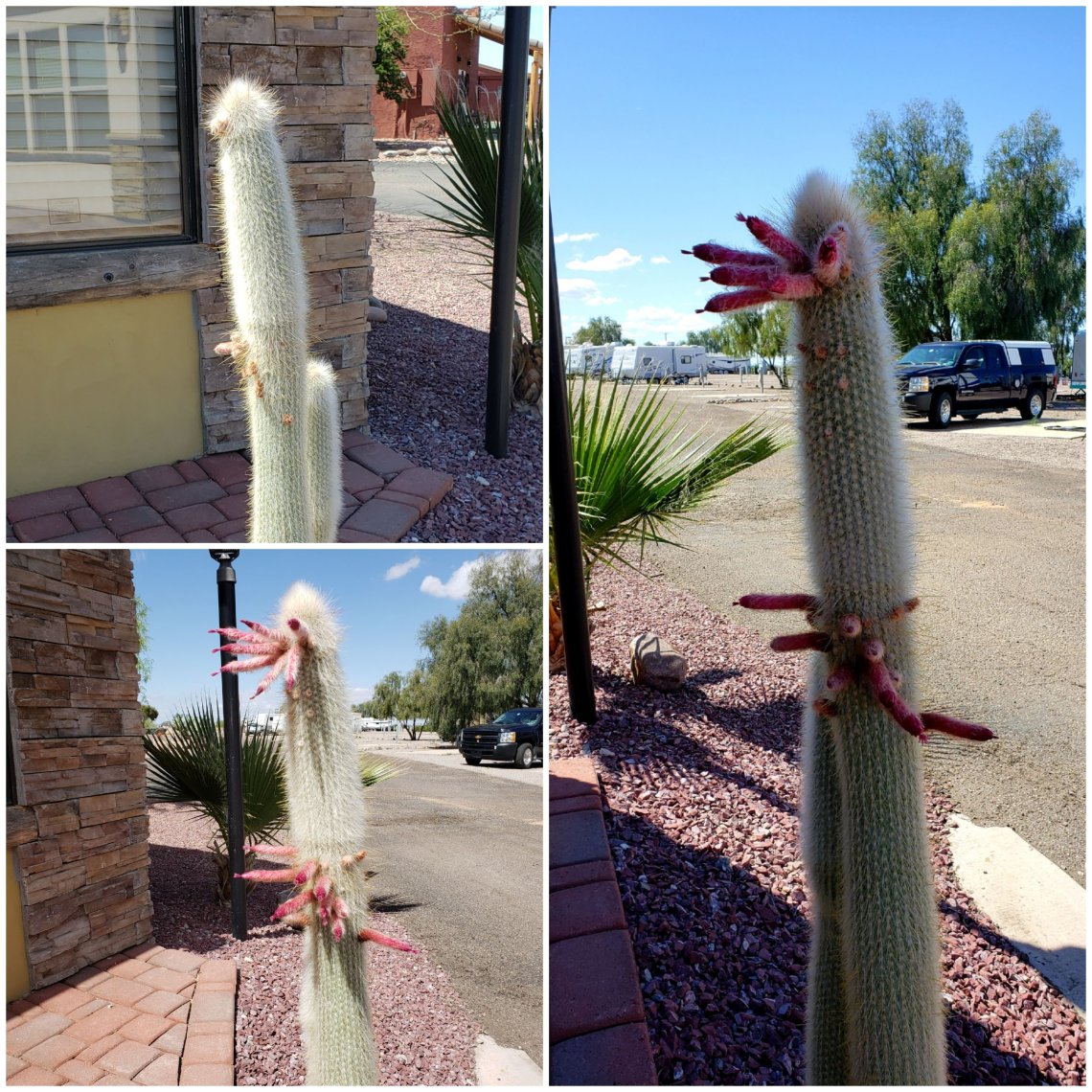 There are two of these Old Man Cactus here at the Ranch.The flowers, are very unique and are 1 to 2 inch long narrow flowers that usually bloom at night. As you can see, one old man is more pink than the other which is a red color.
There are two of these Old Man Cactus here at the Ranch.The flowers, are very unique and are 1 to 2 inch long narrow flowers that usually bloom at night. As you can see, one old man is more pink than the other which is a red color.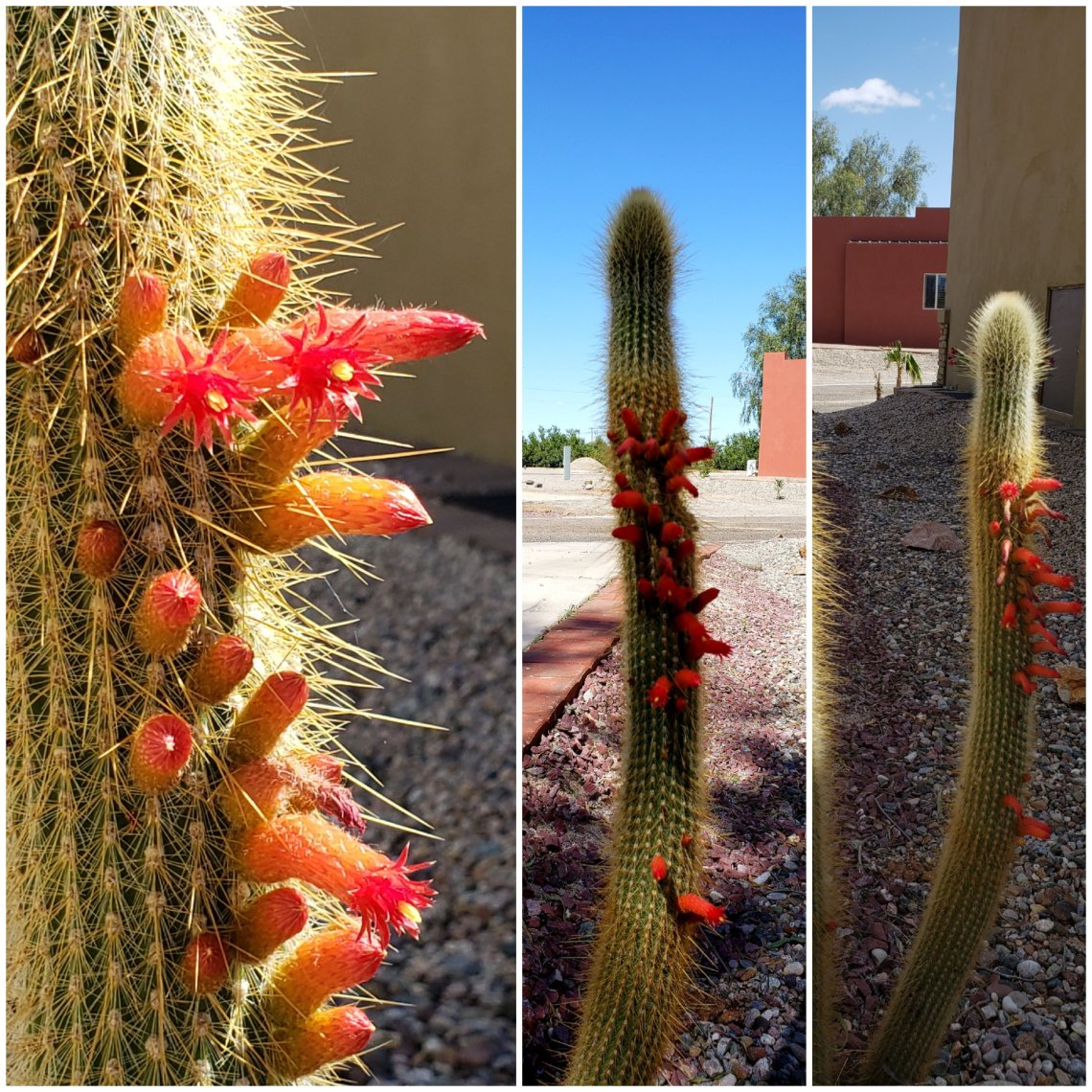 **** The Barrel CactusAnother cacti that has many different varieties.All, though, are barrel-shaped and have very strong stiff spines. Below you have a smaller barrel and two larger in the background.
**** The Barrel CactusAnother cacti that has many different varieties.All, though, are barrel-shaped and have very strong stiff spines. Below you have a smaller barrel and two larger in the background.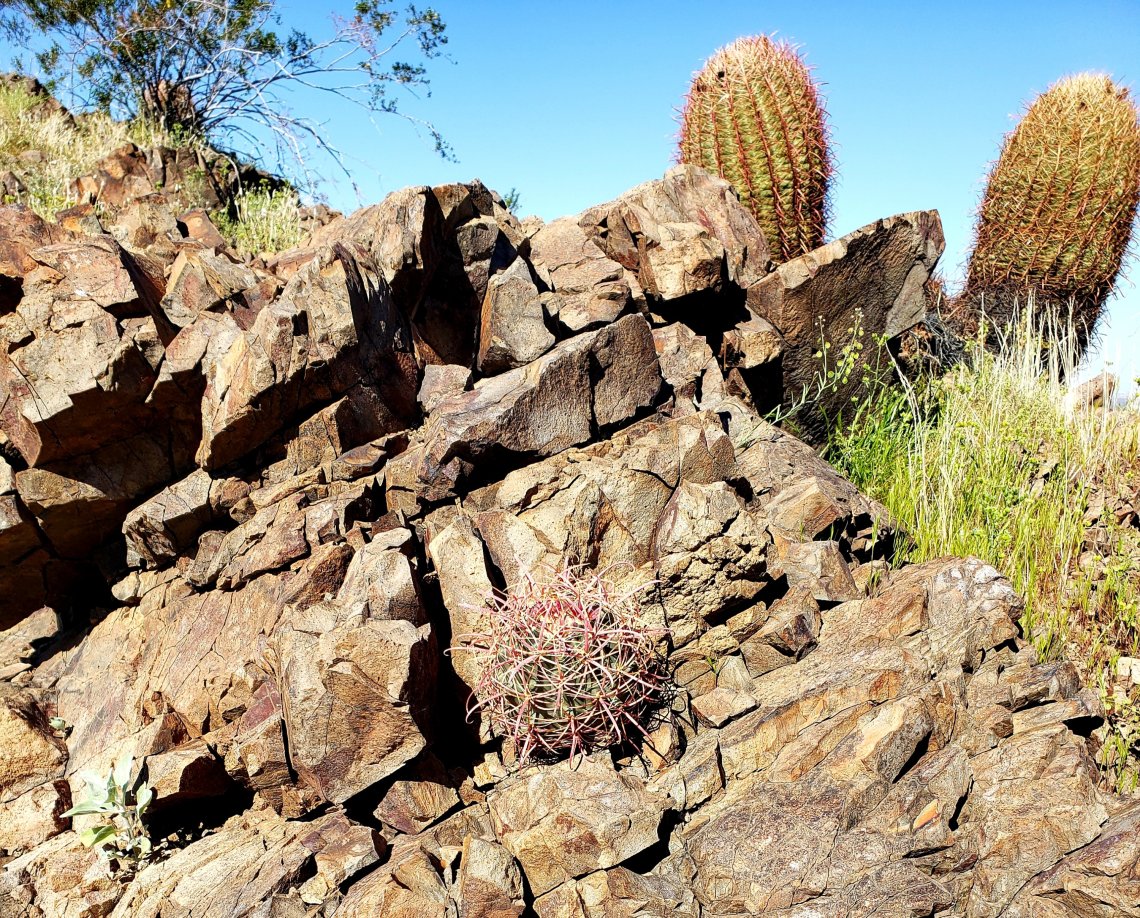 These particular cactus have many heads and were a rare find.
These particular cactus have many heads and were a rare find.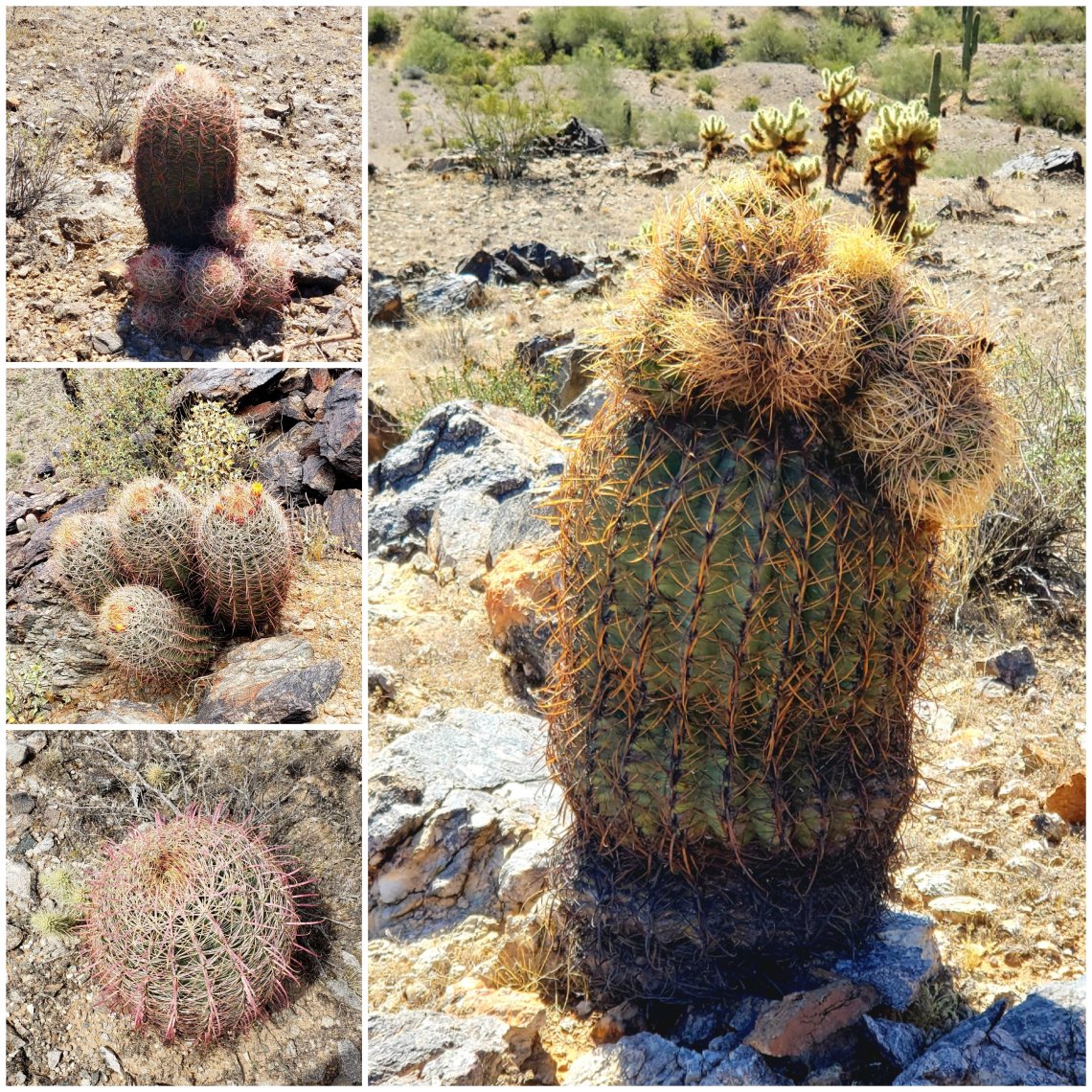 The cactus on the left is a Red Fire Barrel and the one on the right is a Compass Barrel.
The cactus on the left is a Red Fire Barrel and the one on the right is a Compass Barrel.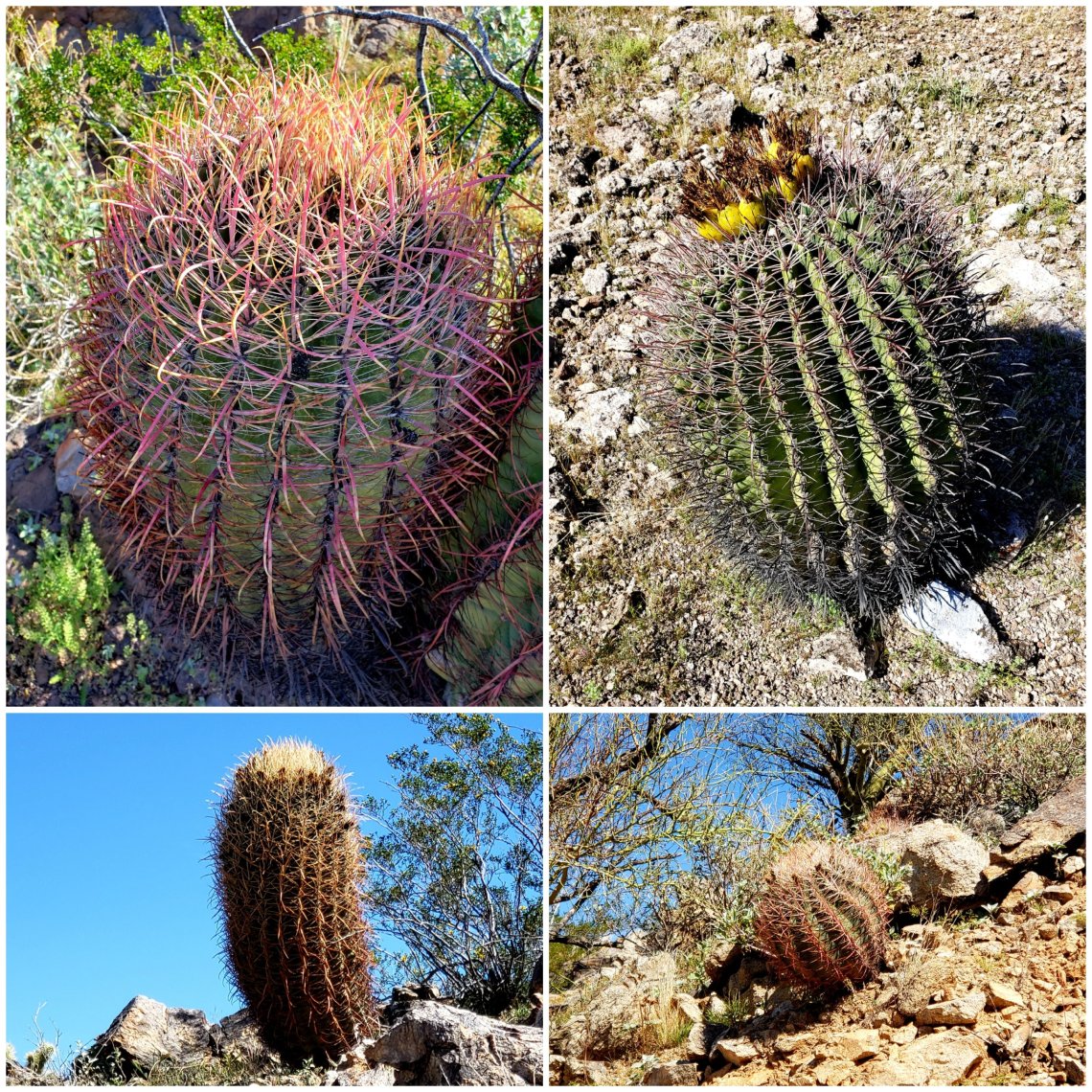 The Compass Barrel can grow up to 5 feet high and have up to 30 ribs with very rigid spines.The Compass Barrel was the most common barrel cactus that I encountered. Beautiful yellow flowers that bloom like a halo or wreath are found around the top.Many times when I came upon a Compass Barrel they had yellow fruit where the flowers would blossom and these had been eaten by critters.
The Compass Barrel can grow up to 5 feet high and have up to 30 ribs with very rigid spines.The Compass Barrel was the most common barrel cactus that I encountered. Beautiful yellow flowers that bloom like a halo or wreath are found around the top.Many times when I came upon a Compass Barrel they had yellow fruit where the flowers would blossom and these had been eaten by critters.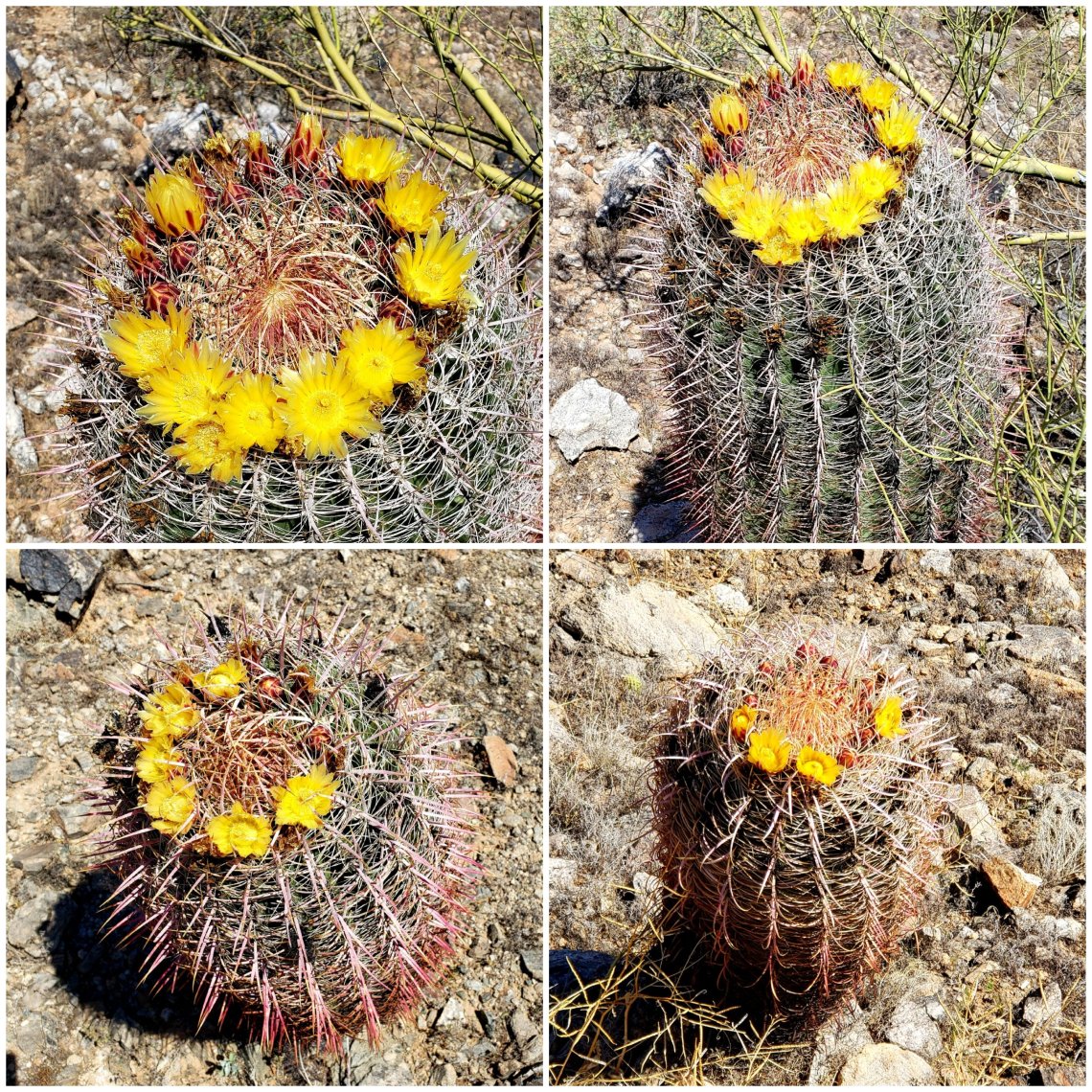
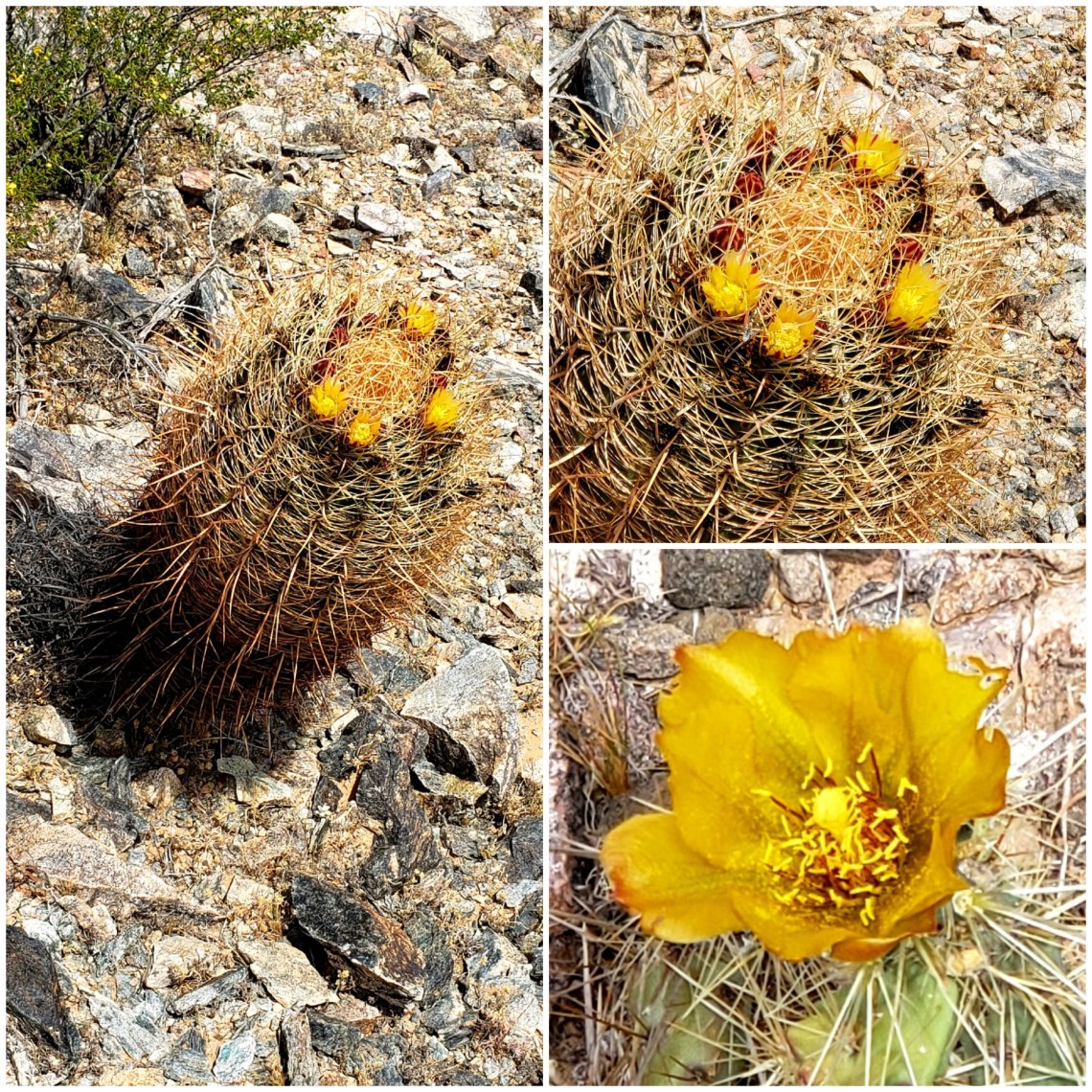 Seen at the Boyce Thompson Arboretum this beautiful Red Fire Barrel Cactus is showing off its red flowers.
Seen at the Boyce Thompson Arboretum this beautiful Red Fire Barrel Cactus is showing off its red flowers. **** The Pincushion CactusThese very small cactus can be found growing virtually anywhere, even rock.
**** The Pincushion CactusThese very small cactus can be found growing virtually anywhere, even rock.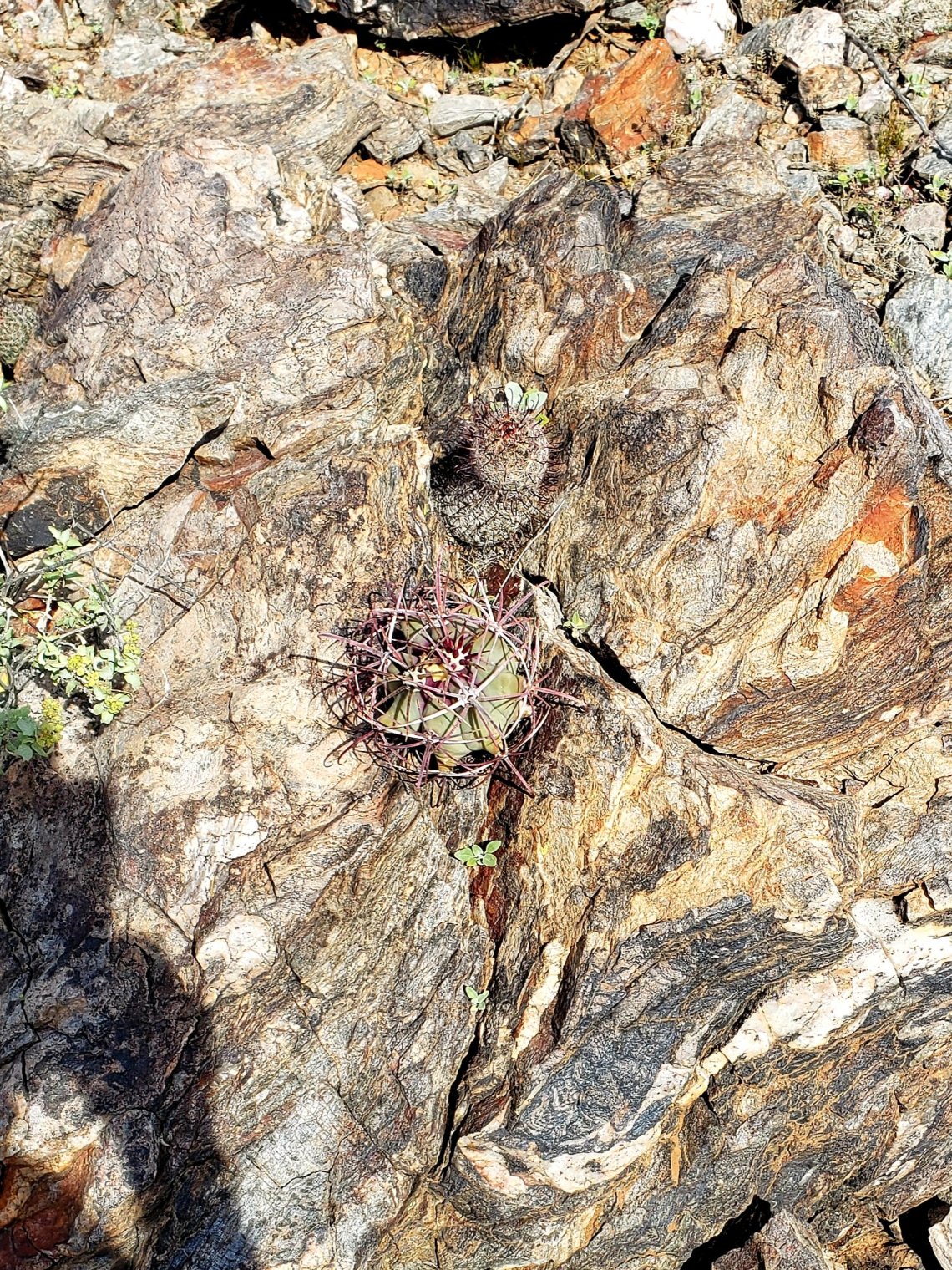 Many times they are found in groups or bunches.
Many times they are found in groups or bunches. These are Arizona Fishhook Pincushion. They are only 3 to 7 inches in height and up to 3 inches in diameter.
These are Arizona Fishhook Pincushion. They are only 3 to 7 inches in height and up to 3 inches in diameter.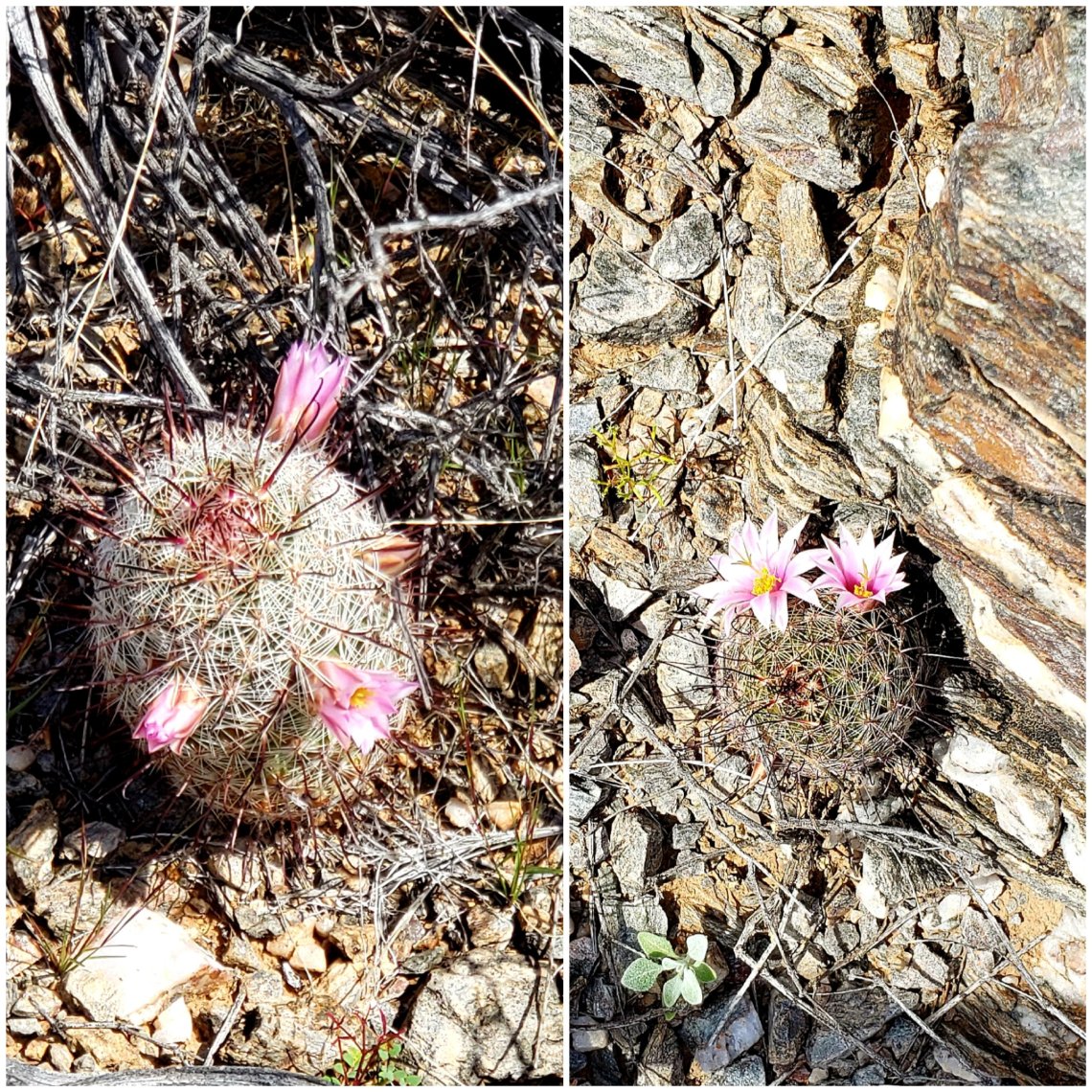 These pincushion cactus also produce a small red pod that is club-shaped.
These pincushion cactus also produce a small red pod that is club-shaped. **** Cholla (choy-ah)The Cholla, I would say is the most common type of cactus found in the desert. It also has many varieties. All of them are tree-like with short woody trunks and sprawling branches.This is the Buckhorn Cholla.
**** Cholla (choy-ah)The Cholla, I would say is the most common type of cactus found in the desert. It also has many varieties. All of them are tree-like with short woody trunks and sprawling branches.This is the Buckhorn Cholla.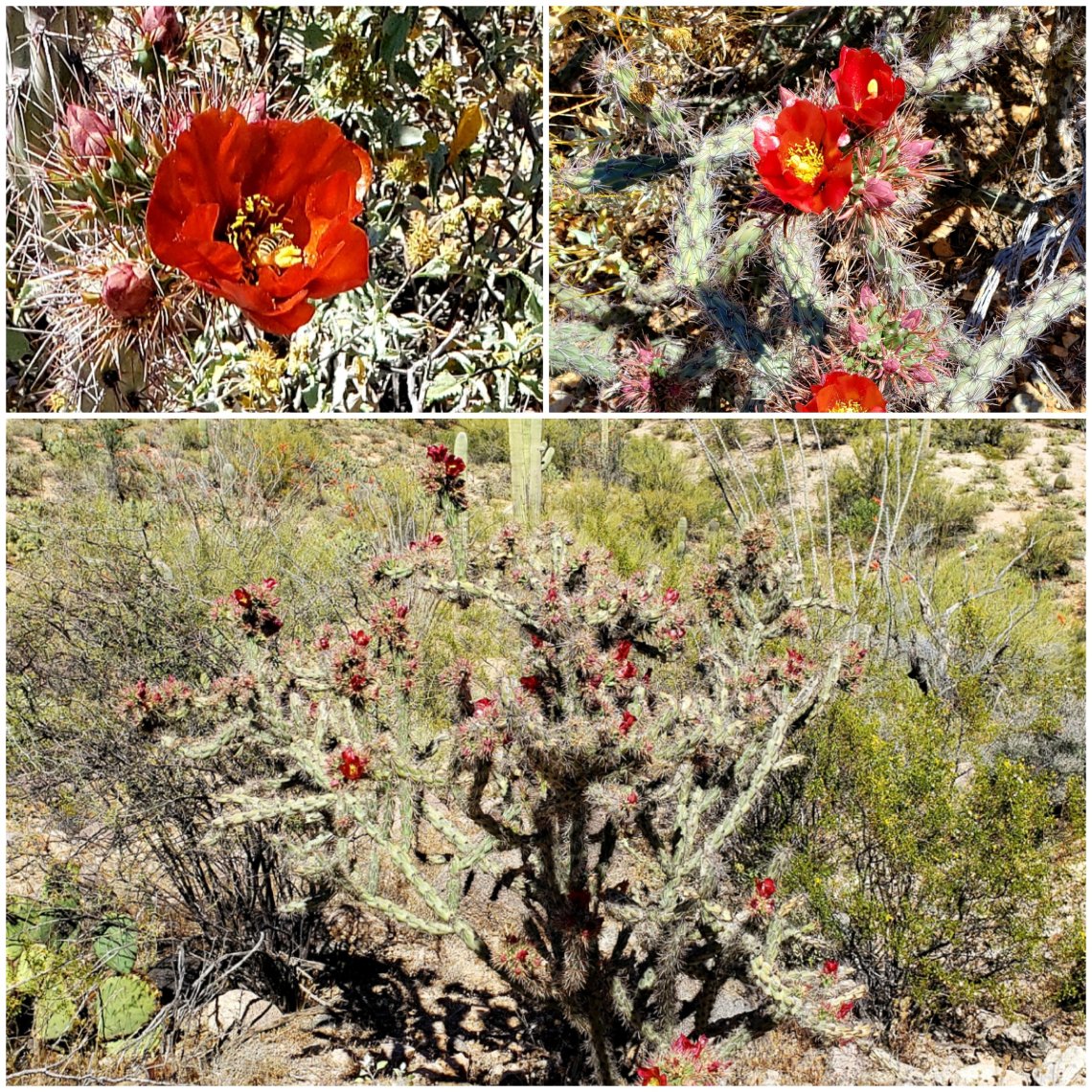 This is a Whipple Cholla with its pretty greenish yellow flower.
This is a Whipple Cholla with its pretty greenish yellow flower.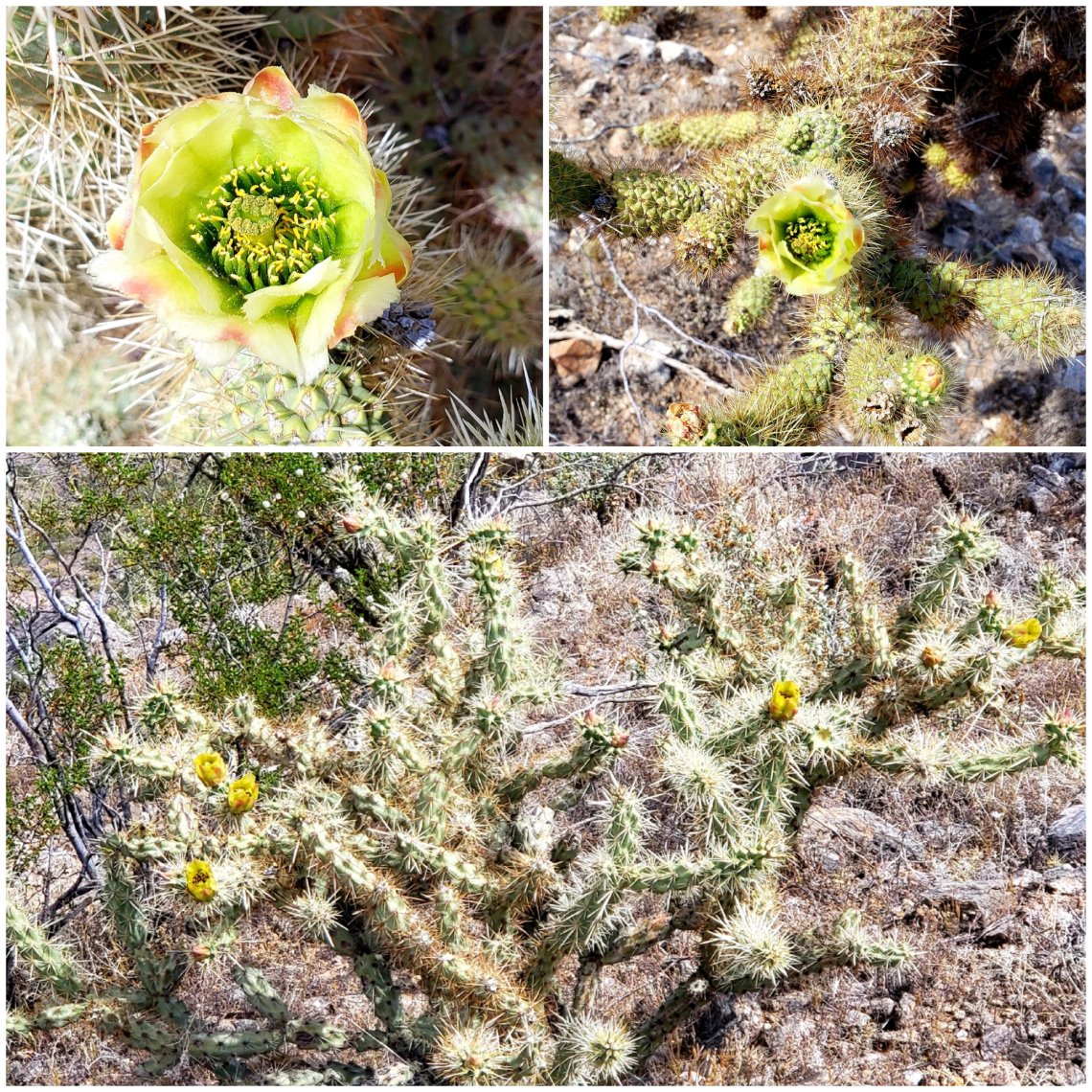 The Staghorn Cholla
The Staghorn Cholla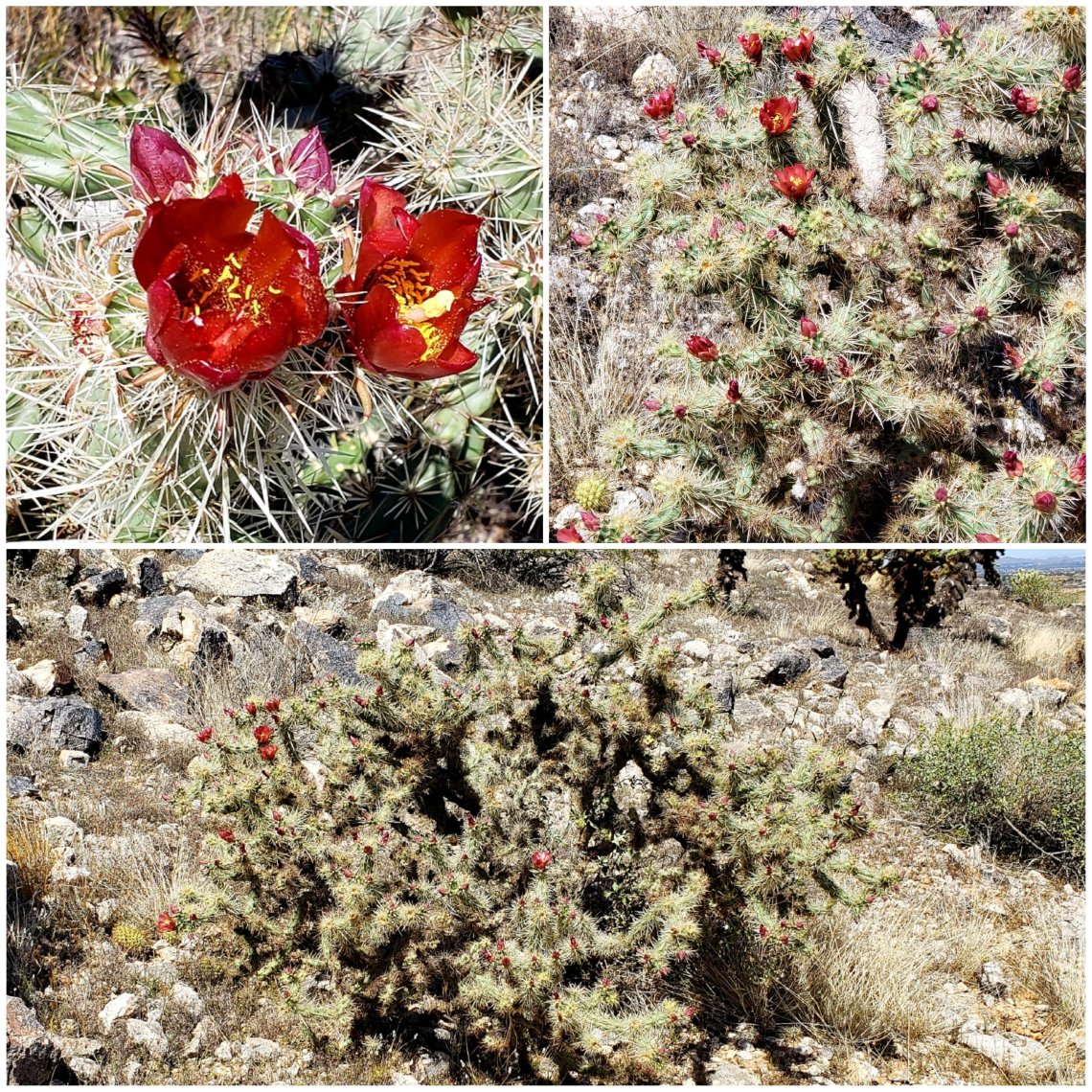 The Teddy Bear Cholla with its yellow flowers and red tips. Beware, this Cholla is not soft and cuddly.
The Teddy Bear Cholla with its yellow flowers and red tips. Beware, this Cholla is not soft and cuddly.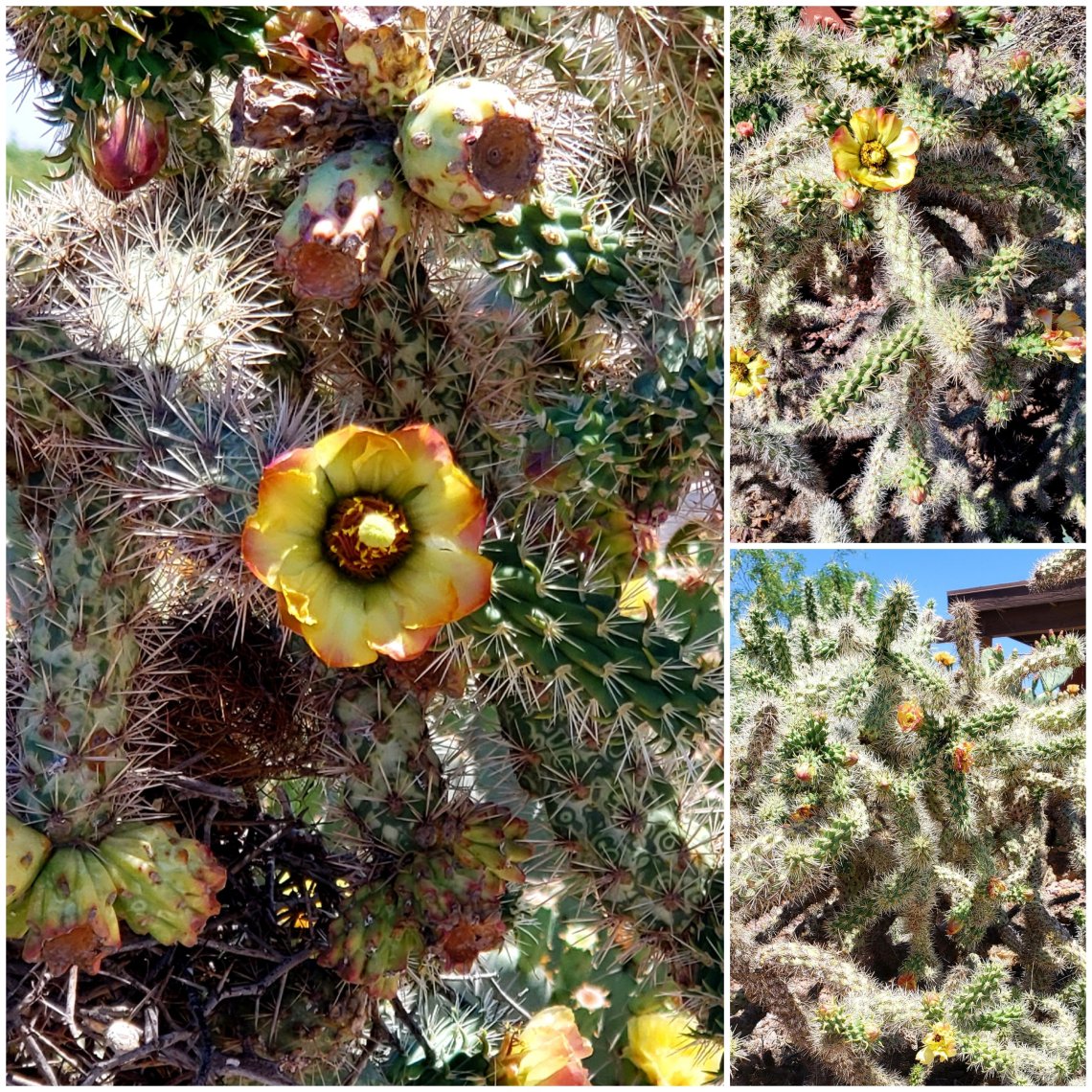 Another Buckhorn with more of an orange flower.
Another Buckhorn with more of an orange flower. **** HedgehogsThe Pink-flowering Hedgehog is the most common to see on the desert floor here in Casa Grande.When they blossomed they added the most wonderful pop of color to the sides of mountains and on the desert floor.
**** HedgehogsThe Pink-flowering Hedgehog is the most common to see on the desert floor here in Casa Grande.When they blossomed they added the most wonderful pop of color to the sides of mountains and on the desert floor.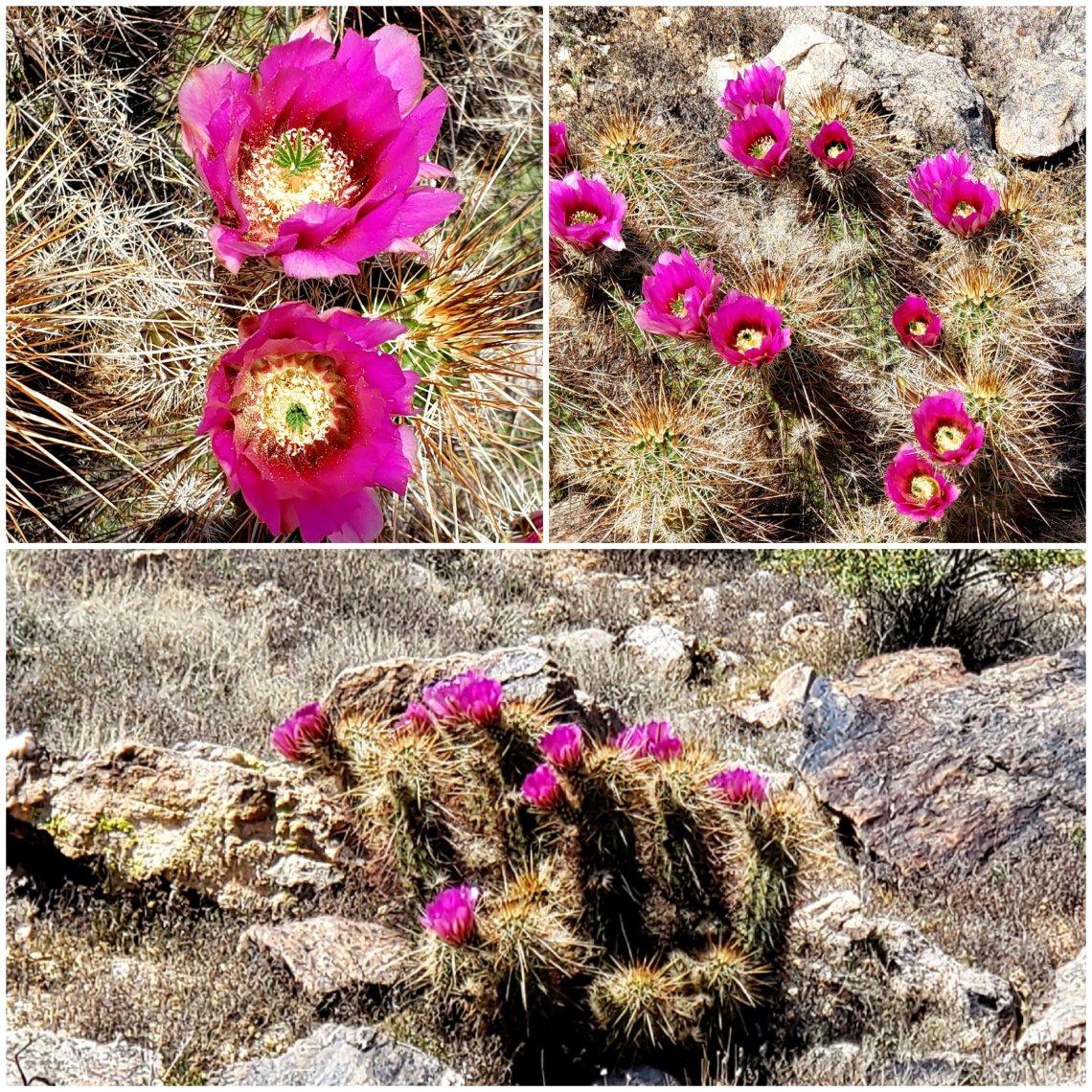 These are the pink flowered hedgehogs at the ranch.Some of my friends helped me with descriptive rocks for the different cactus within the Ranch. Thanks Wendy and Val, eh!
These are the pink flowered hedgehogs at the ranch.Some of my friends helped me with descriptive rocks for the different cactus within the Ranch. Thanks Wendy and Val, eh!
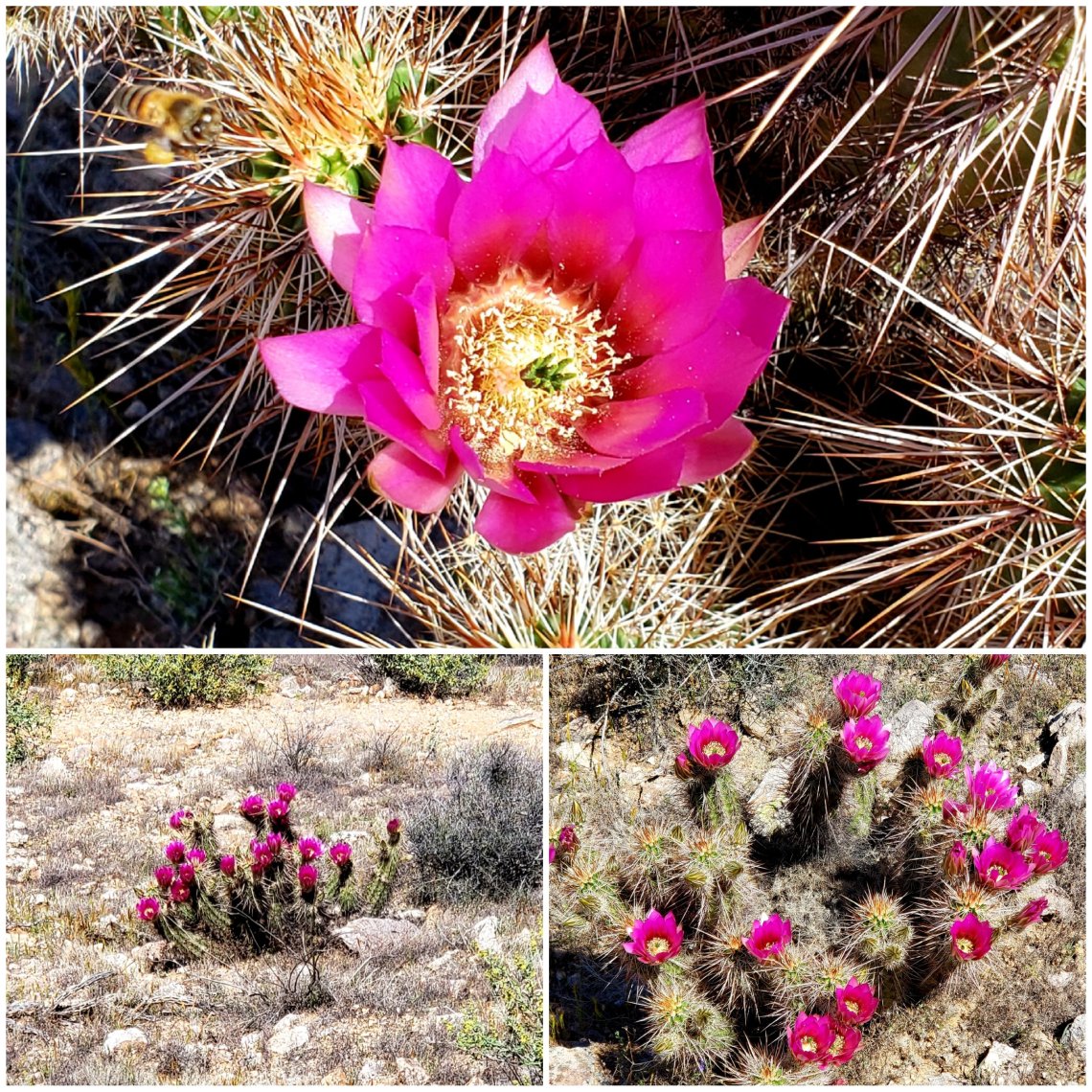 **** WildflowersSpring in Arizona brings so much color with all the varieties of wildflowers.Whether you are driving or hiking they were in abundance and beautiful to see.I do not know all of the names of the flowers that grow wild in Arizona but I do know they are amazing to see.This is what I researched and came up with:The white are Flatbud Prickly Poppies, Arizona Orange Poppy, Dainty Dogwood, Indian Mallow and a Parry’s Penstemon
**** WildflowersSpring in Arizona brings so much color with all the varieties of wildflowers.Whether you are driving or hiking they were in abundance and beautiful to see.I do not know all of the names of the flowers that grow wild in Arizona but I do know they are amazing to see.This is what I researched and came up with:The white are Flatbud Prickly Poppies, Arizona Orange Poppy, Dainty Dogwood, Indian Mallow and a Parry’s Penstemon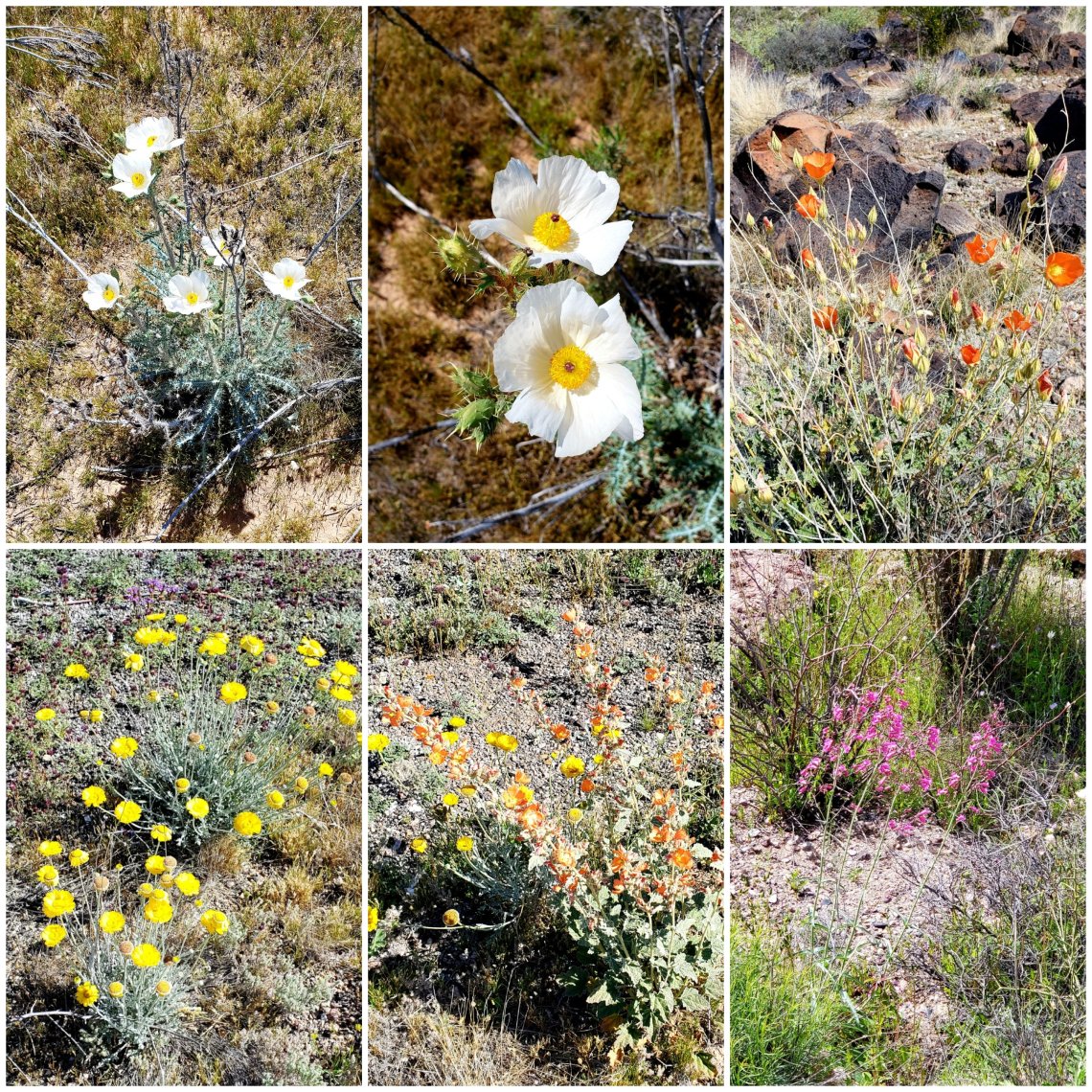 These I believe are Larkspur, Lupine and Asters
These I believe are Larkspur, Lupine and Asters The white is Plumseed, the purple may be Penstemon, but the bright yellow are Golden Mexican Poppies
The white is Plumseed, the purple may be Penstemon, but the bright yellow are Golden Mexican Poppies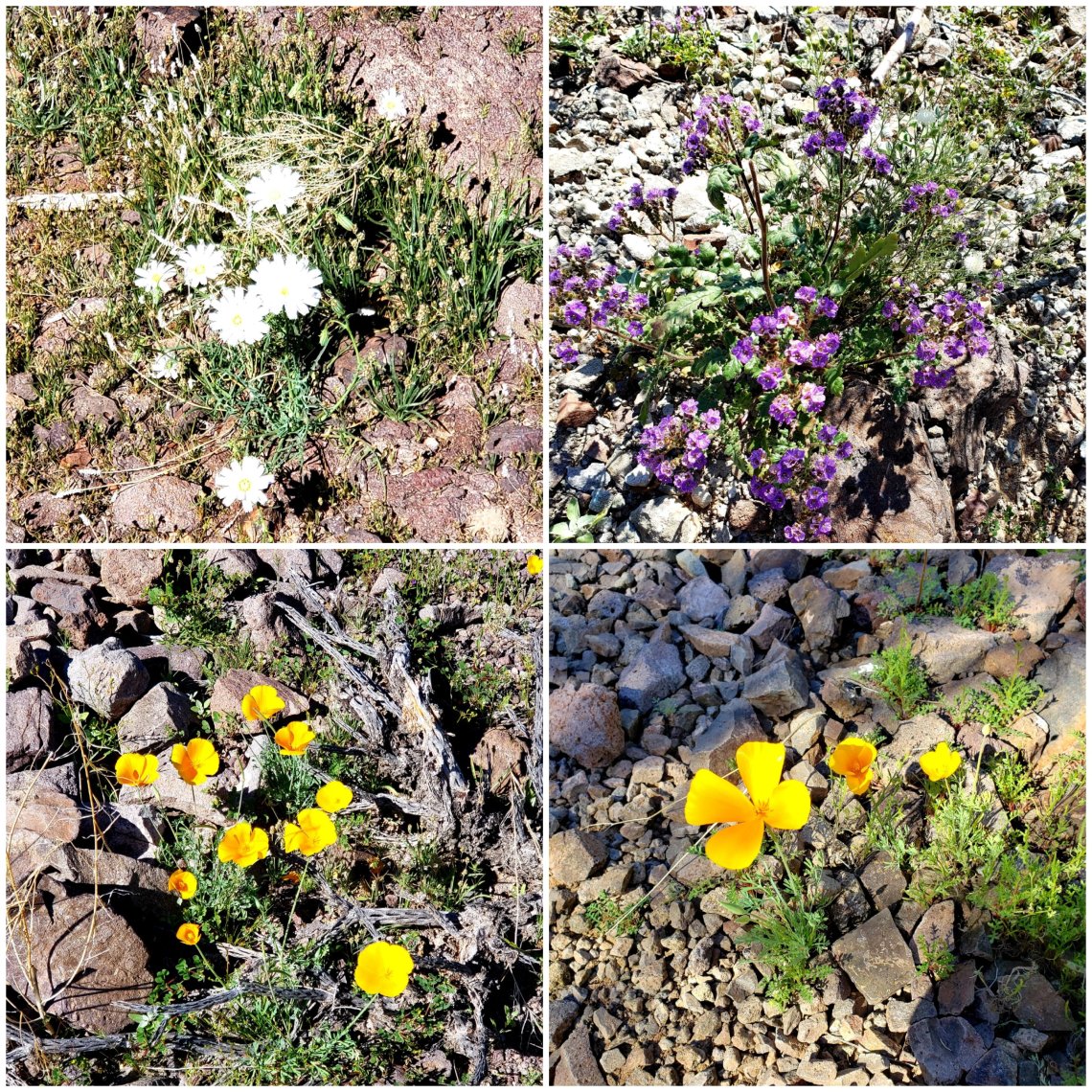 Firecracker Bush, Wild Mallows, Creosote and Brittlebush
Firecracker Bush, Wild Mallows, Creosote and Brittlebush Oleanders are the red and white flowers shown below and the purple I believe is Silver-leafed Nightshade.
Oleanders are the red and white flowers shown below and the purple I believe is Silver-leafed Nightshade.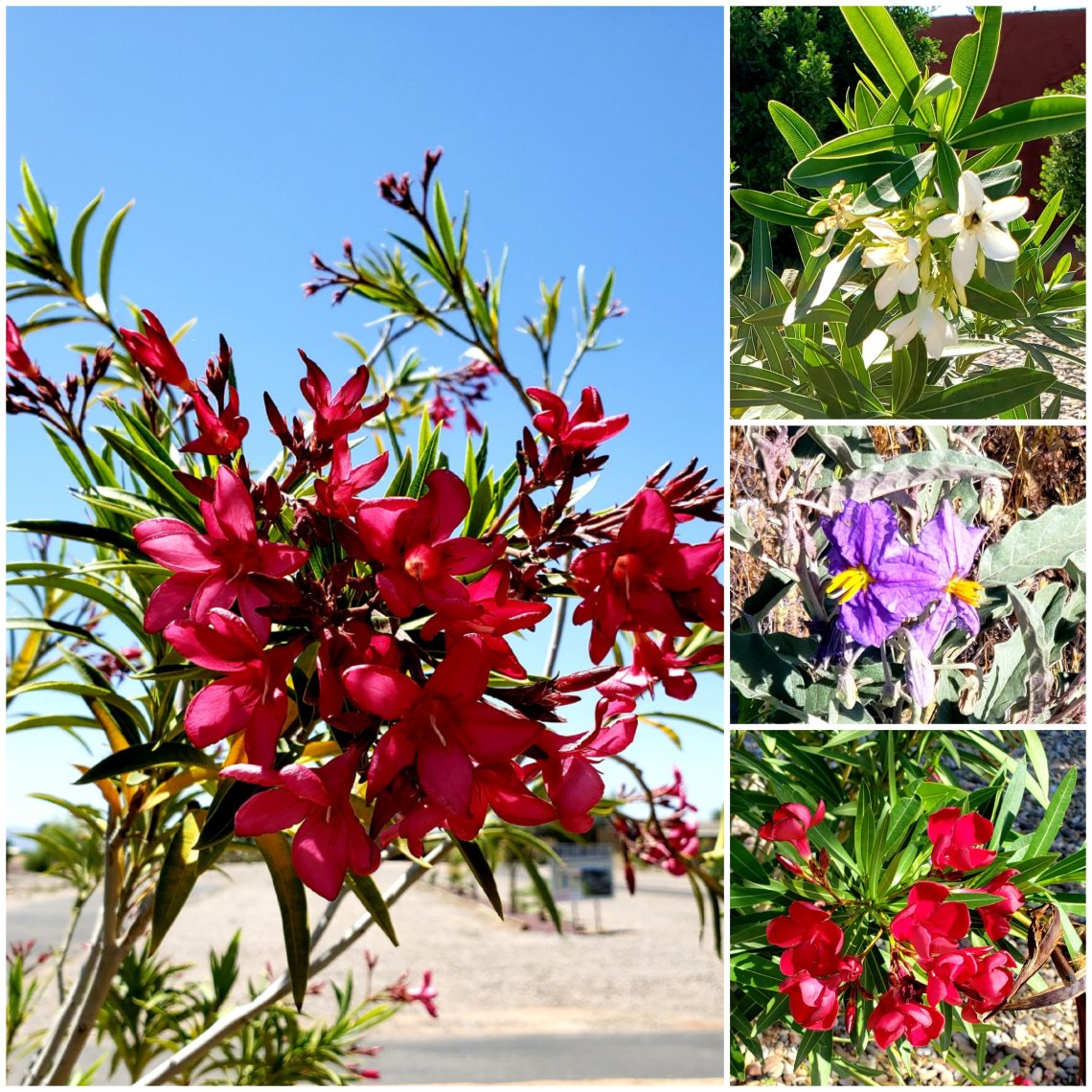 This is a Bottlebrush bush/tree.
This is a Bottlebrush bush/tree.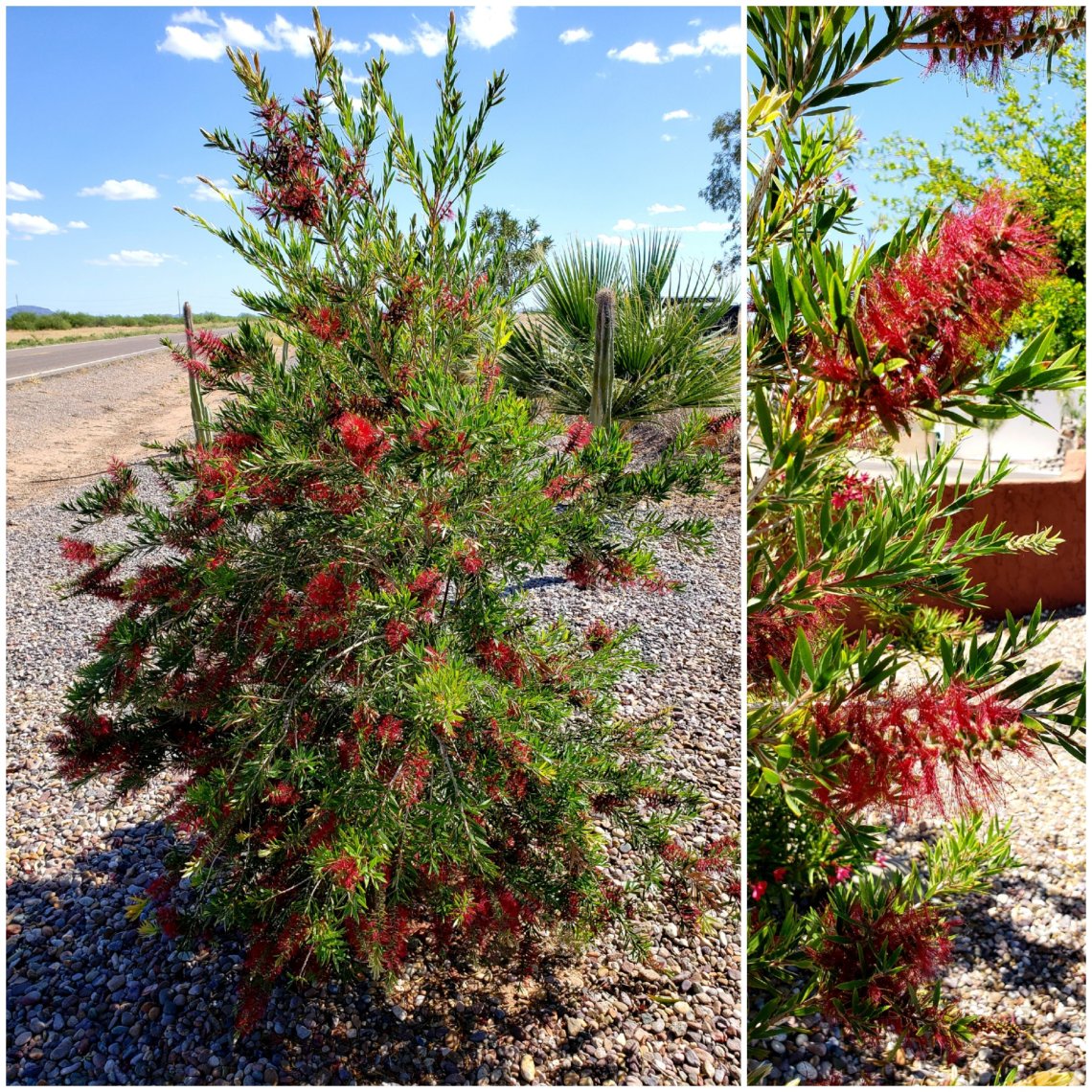 ****With my time here ending soon I want to leave you with some of the most beautiful, brilliant color I have ever seen.These are Easter Lily Cactus, they bloom at night until mid morning and this morning I was honored to witness such beauty.There is a qoute I would like to share, “ The cactus flower is a symbol of maternal love because it can thrive in harsh conditions and therefore symbolic of a mother’s unconditional love.“How appropriate for this weekend, Happy Mother’s Day ♡
****With my time here ending soon I want to leave you with some of the most beautiful, brilliant color I have ever seen.These are Easter Lily Cactus, they bloom at night until mid morning and this morning I was honored to witness such beauty.There is a qoute I would like to share, “ The cactus flower is a symbol of maternal love because it can thrive in harsh conditions and therefore symbolic of a mother’s unconditional love.“How appropriate for this weekend, Happy Mother’s Day ♡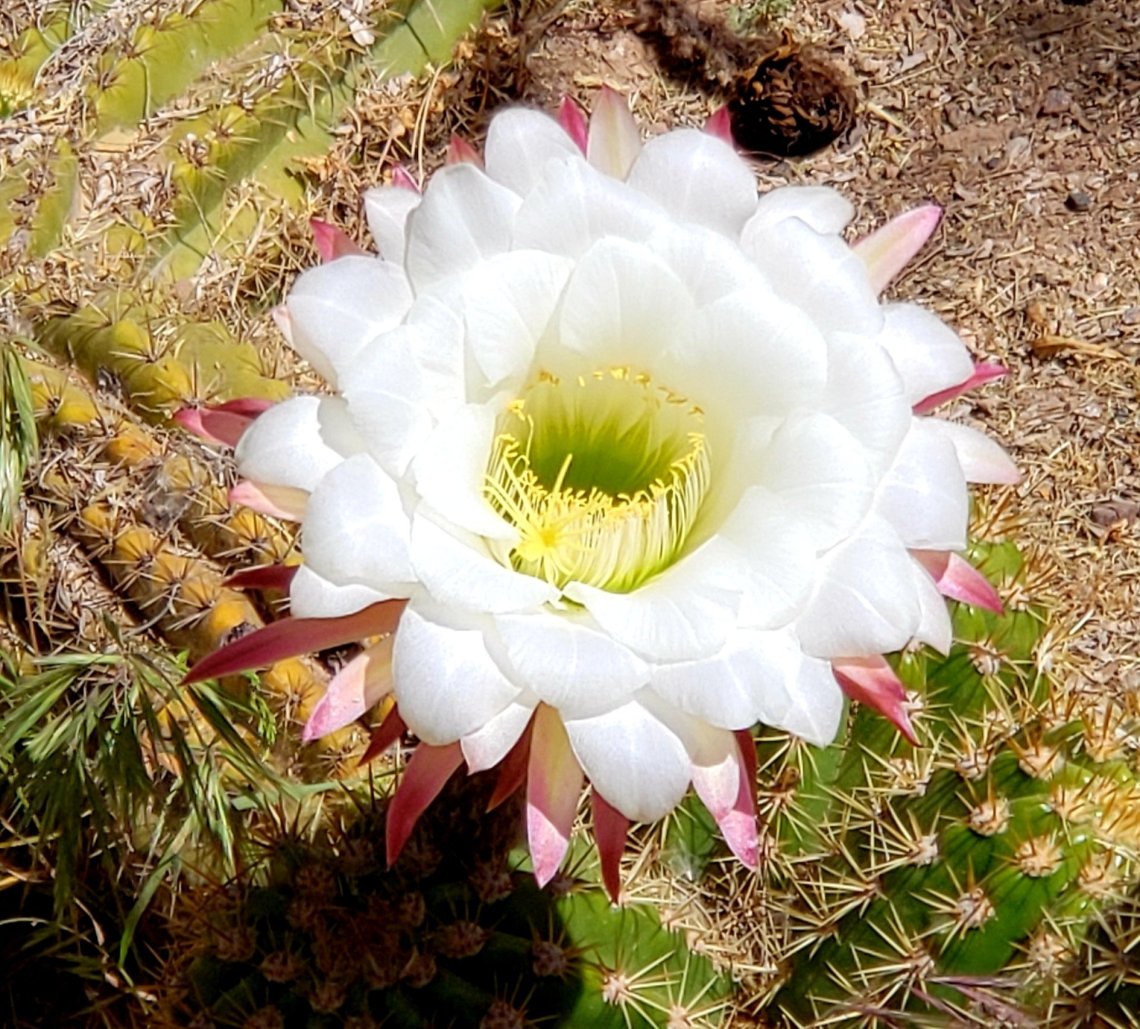

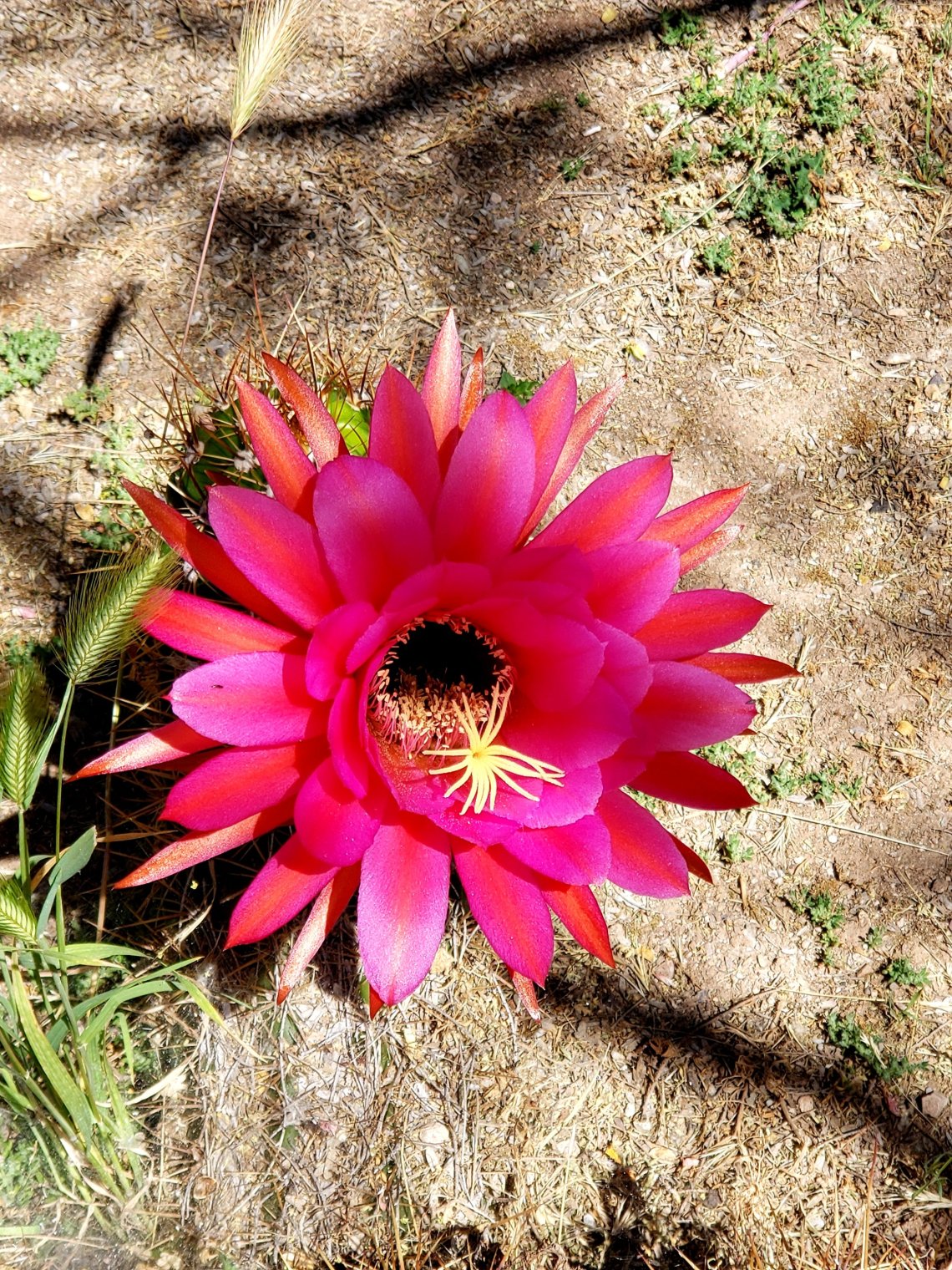
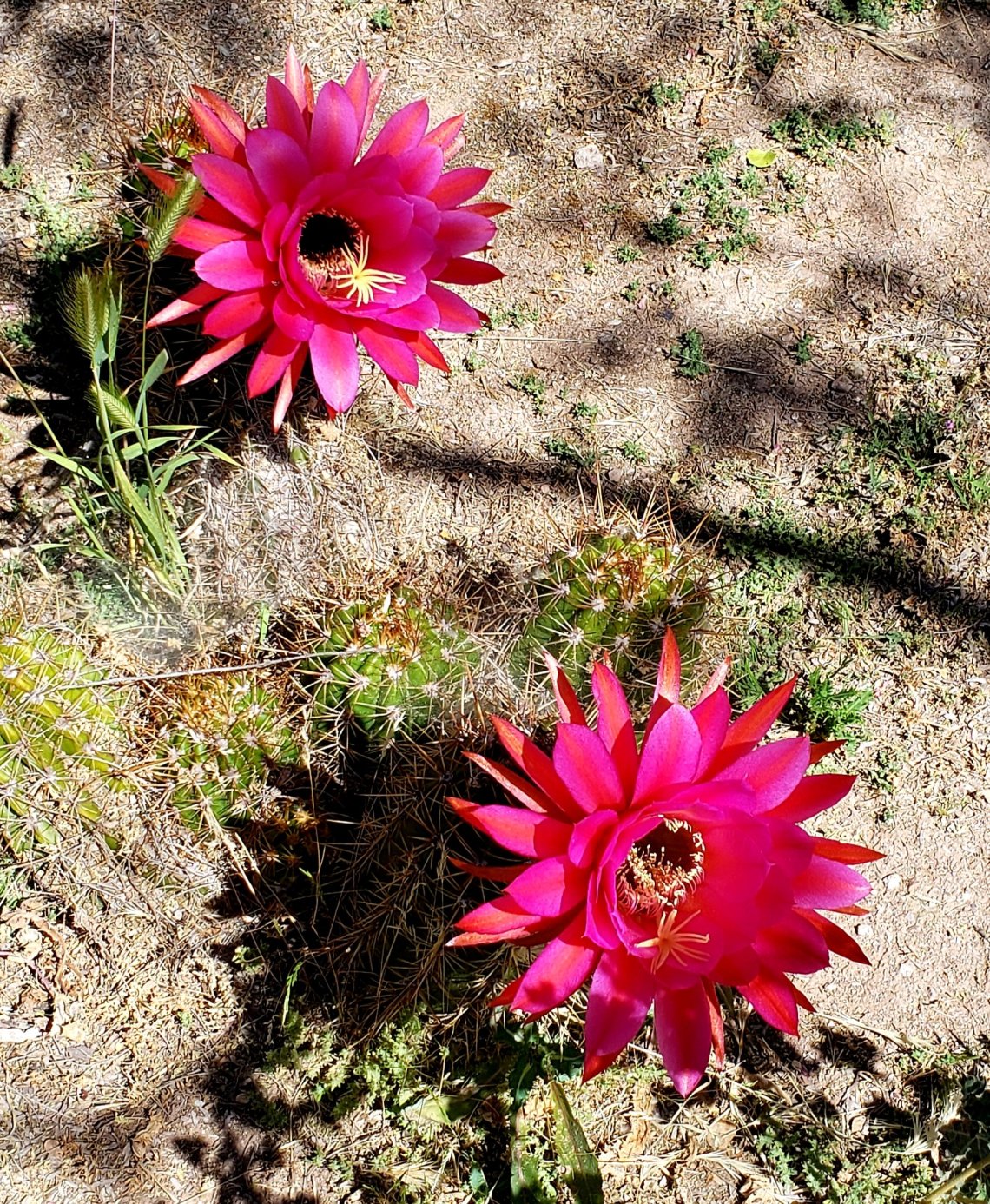 Thank you to Boyd Smith, owner of Desert Springs Ranch and Dan Deakin for your hospitality.https://www.desertspringsranch.com/** This blog is dedicated to my son & daughter whom I miss and love dearly ****** DisclaimerI am by no means a cactus expert. Purely an amateur and cactus enthusiast. The names you see associated with the cactus in this blog are in my opinion the best that suit the pictured cactus per my field guide.Through the use of the Field Guide and the internet I was able to give it my best guess!
Thank you to Boyd Smith, owner of Desert Springs Ranch and Dan Deakin for your hospitality.https://www.desertspringsranch.com/** This blog is dedicated to my son & daughter whom I miss and love dearly ****** DisclaimerI am by no means a cactus expert. Purely an amateur and cactus enthusiast. The names you see associated with the cactus in this blog are in my opinion the best that suit the pictured cactus per my field guide.Through the use of the Field Guide and the internet I was able to give it my best guess!
The Cactus and its Beauty
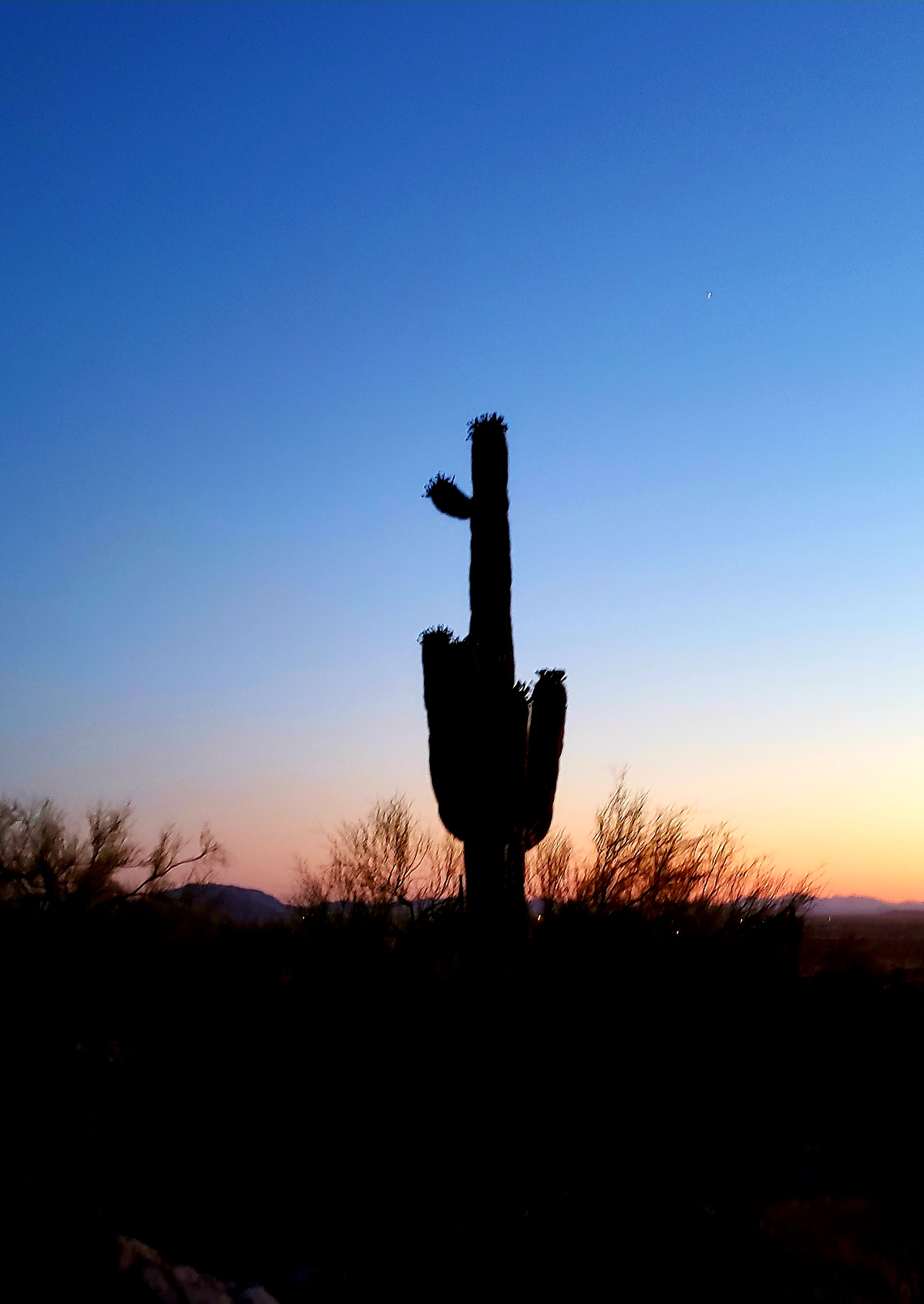
Excellent post,
I volunteer at the Arizona Sonora Desert Museum. Did you know that Saguaros don’t grow arms until they are between 65 and 75 years old? Also, there is no way to tell the age of a Saguaro in the wild. Ones with 8 or more arms may be as old as 125-150 years old. Fascinating isn’t it.
LikeLike
Once again beautiful pictures and informative comments. Looking forward to your future travels. Be safe.
Bev Greer
LikeLike
Thanks Bev ! Hope your well and be safe!
LikeLike
I so wanted to visit there but with everything I will have to miss it ☹
I love the Saguaro cactus and I think I was told this when I watched the film at the Visitors Center at the National Park.
Sometimes I get carried away and people lose interest reading because I could have went into so much more on every species
LikeLike
It’s worth the diversion.
LikeLike
Some incredible photos Lori, the cactus is an amazing plant isn’t it? Especially in the desert setting where it does look like a classic cowboy movie set. Love Arizona, such a fascinating state.
LikeLike
Yes! One of my favorite places!
LikeLiked by 1 person
Good to hear from you. The pictures are beautiful.
Sent from Earlene’s iPad
>
LikeLike
Hello and hope allis well with you!
LikeLike
I am a cactus lover for several reasons – their unique archtecture survival at great odds surprising blooms and stability in growth – almost like beings. i love them for their disposition and endurability – this post is marvellous for cacti lovers such wonderful pics. you may if you like visit my own post above -The plant that surprised me at search for the soul.
LikeLike
Thank you I will !
LikeLike